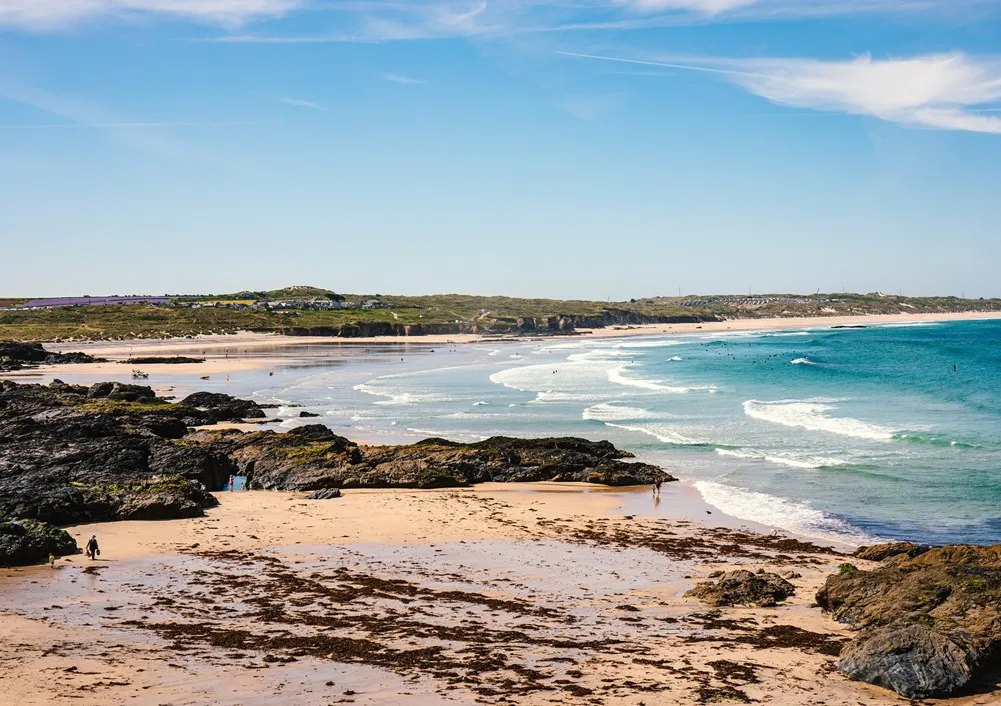
Weather windows


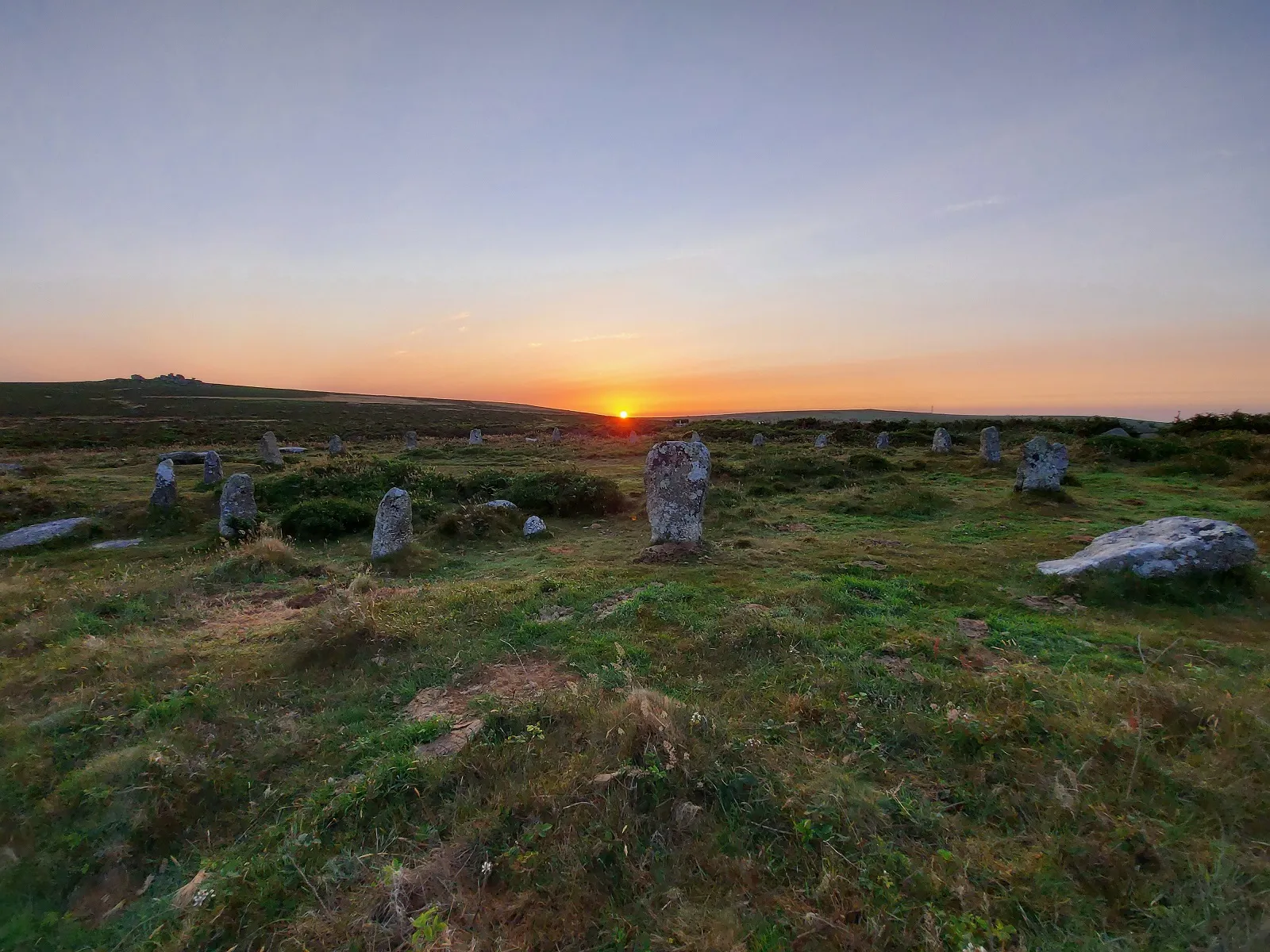
Our ancestors found wonder and reassurance in the night sky, creating places for stargazing rituals that you can uncover across Cornwall. We went in search of celestial coastal wonder with the help of local astronomer Carolyn Kennett.
Life can be uncertain, but looking up at the night sky might offer us a sense of stability: the unchanged Orion’s Belt, the Big Dipper still staring back at us with its bear-like eyes, and the twin figures of Gemini stretching out their arms towards us.
The sky has more or less looked the same for thousands of years, but if we look further the stars are always moving. One day, albeit in a few million years, the night sky will look nothing like it does today.
It’s possible ancient civilisations found wonder in the sky’s movements and part of the reason they dedicated so much time to stargazing and built monuments to the night sky. The remains of these monuments can be found across Cornwall, giving clues to the rituals of the past, while the clear, dark skies by the coast offer plenty of scope to create your own stargazing rituals on holiday.
Visiting with a large group? Discover our large holiday homes perfect for big families or friend groups.
Local astronomer, Carolyn Kennett, is well acquainted with Cornwall’s rich astronomical history, and has her own rituals for the region’s star-spotting sites.
“We’ve moved away and lost our connection to the night sky; we forget to look up to see what’s going on,” she says. Creating this deep connection to the stars was always an important part of our ancestors’ lives.
From visiting ancient astronomical sites to sharing folk tales to simply watching stars glide past you in the dark, Carolyn’s tours bring this connection to life. “When you see the Bronze Age monuments from about four thousand years ago, that’s when things get interesting,” she says.
 Tregeseal Stone Circle (Credit: Carolyn Kennett)
Tregeseal Stone Circle (Credit: Carolyn Kennett)
One of the most inspiring spots is at the Penwith Dark Skies Park, West Cornwall. From a stay in westerly properties such as Stella Maris or Sea Salt Sennen, travel through time, to Tregeseal Stone Circle (or The Dancing Stones) a Neolithic Bronze Age monument of nineteen stones.
It’s widely known as a place of ceremony and ritual with strong alignments with the rising and setting of the sun. It’s one of the stargazing tours Carolyn takes travellers on, a magical place to explore in autumn and winter.
Whether in the steps of ancient settlers or at your own choice of coastal dark sky lookout, one of the first starry delights to spot this season is the Orionid meteor shower. Catch this comet as it passes around the sun, lighting-up the rock and dust that trails it, between 2 October – 7 November.
The month of November has even more in store. The Cornwall Astronomy Society Meeting & Stargazing will meet on 12th November to talk under the stars and see what the November sky holds. It isn’t by chance that a beaver moon (which could turn out to be a red blood moon) will appear the same night.
It’s one of the most breathtaking events of the celestial calendar when the moon turns a red colour as it aligns with both the earth and sun in a complete lunar eclipse.
A few days later, between 12th-13th November, the Taurid meteor shower peaks. It’s a key autumn event with the meteors passing by slowly, creating a long-lasting twinkling in the night sky. You don’t need a telescope or binoculars – simply your eyes to look up and absorb the shining expanse above you.
The best chance to seize both these celestial moments is from a place with little light pollution and a clear horizon like the cliff tops.
With clifftop views out to sea, retreats like Iona in Porthcothan or Skyline and Karn Havos in Mawgan Porth, offer clear night-time horizons on the doorstep.
Fancy staying in Mawgan Porth? Have a look at our Mawgan Porth holiday properties.
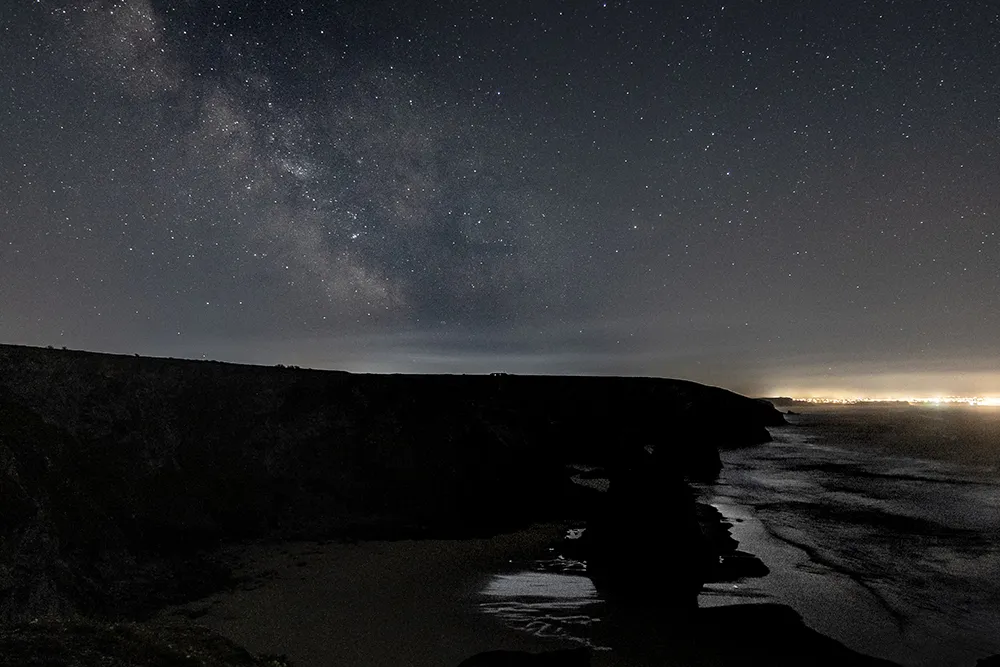
Credit: Graham Gaunt Photowork
With December comes the winter solstice, the shortest day of the year on the 21st of the month and a long-standing time of celebration in many cultures, past and present.
An ancient Cornish monument with celestial connection is Hurlers Stone Circle, created in the early Bronze Age. This ceremonial circle was orientated towards the location of the stars that form Orion’s belt when it was made and it still stands in Bodmin Moor’s Dark Skies Park. It could be the perfect spot for stargazing on the winter solstice.
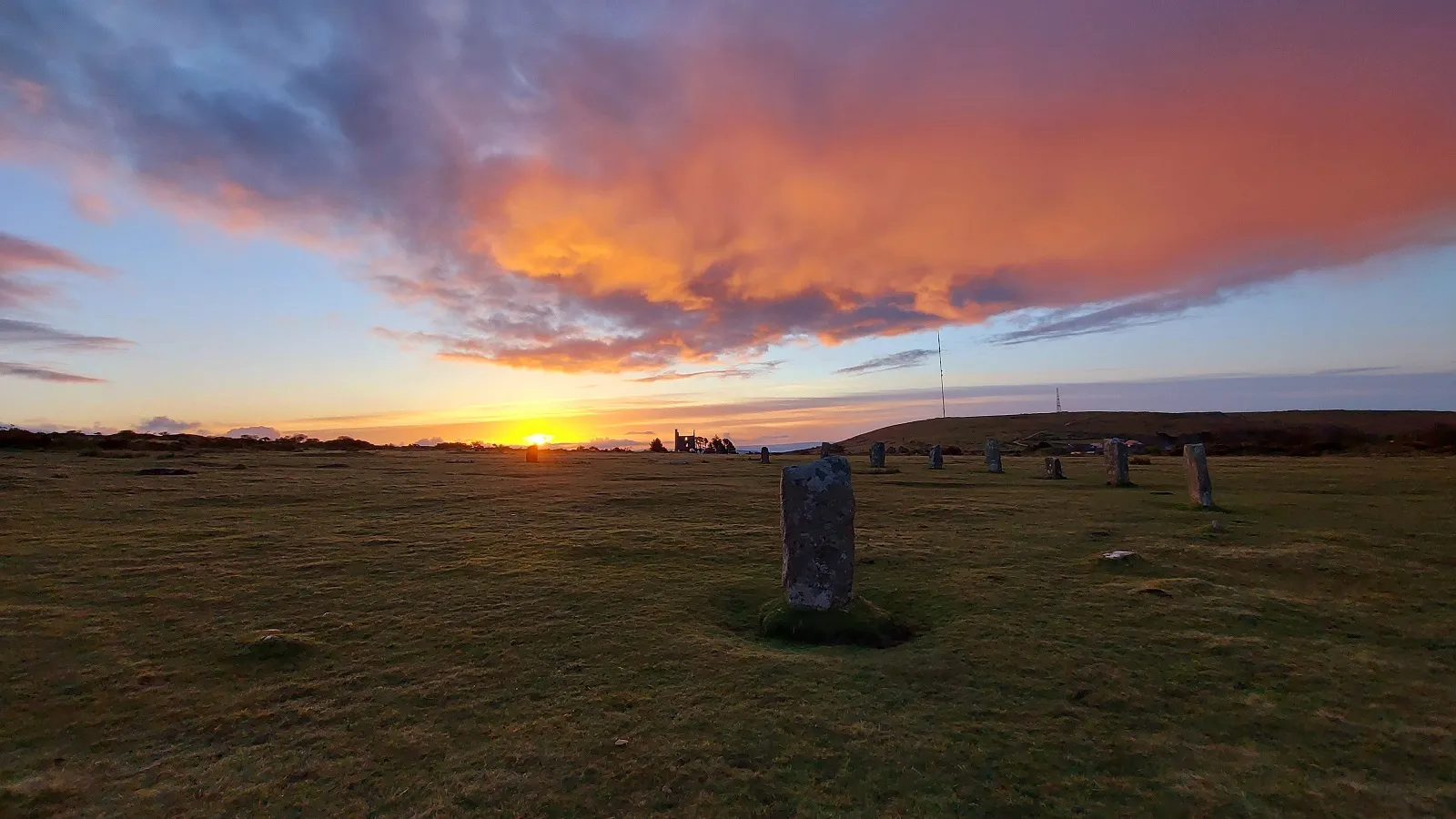
Hurlers Stone Circle at sunrise (Credit: Carolyn Kennett)
Wherever you find yourself in Cornwall, there’s a universe of astronomical sights to see. Experience these wonders in your own stargazing ritual by the coast or discover the dark sky places of our ancestors.
Explore the beauty of new traditions with our guide, inviting you to embrace fresh experiences and create lasting memories along the Cornish coast.
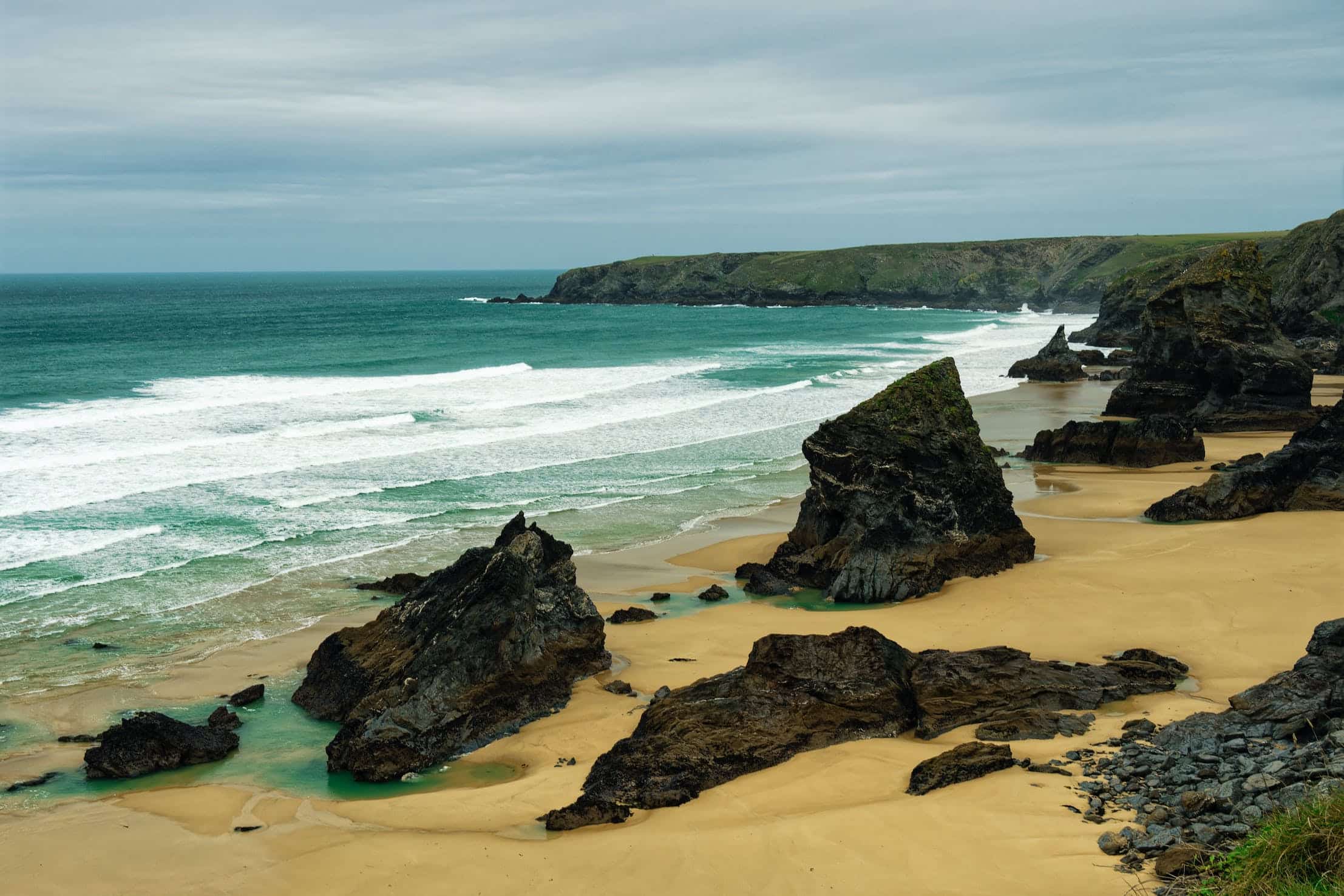
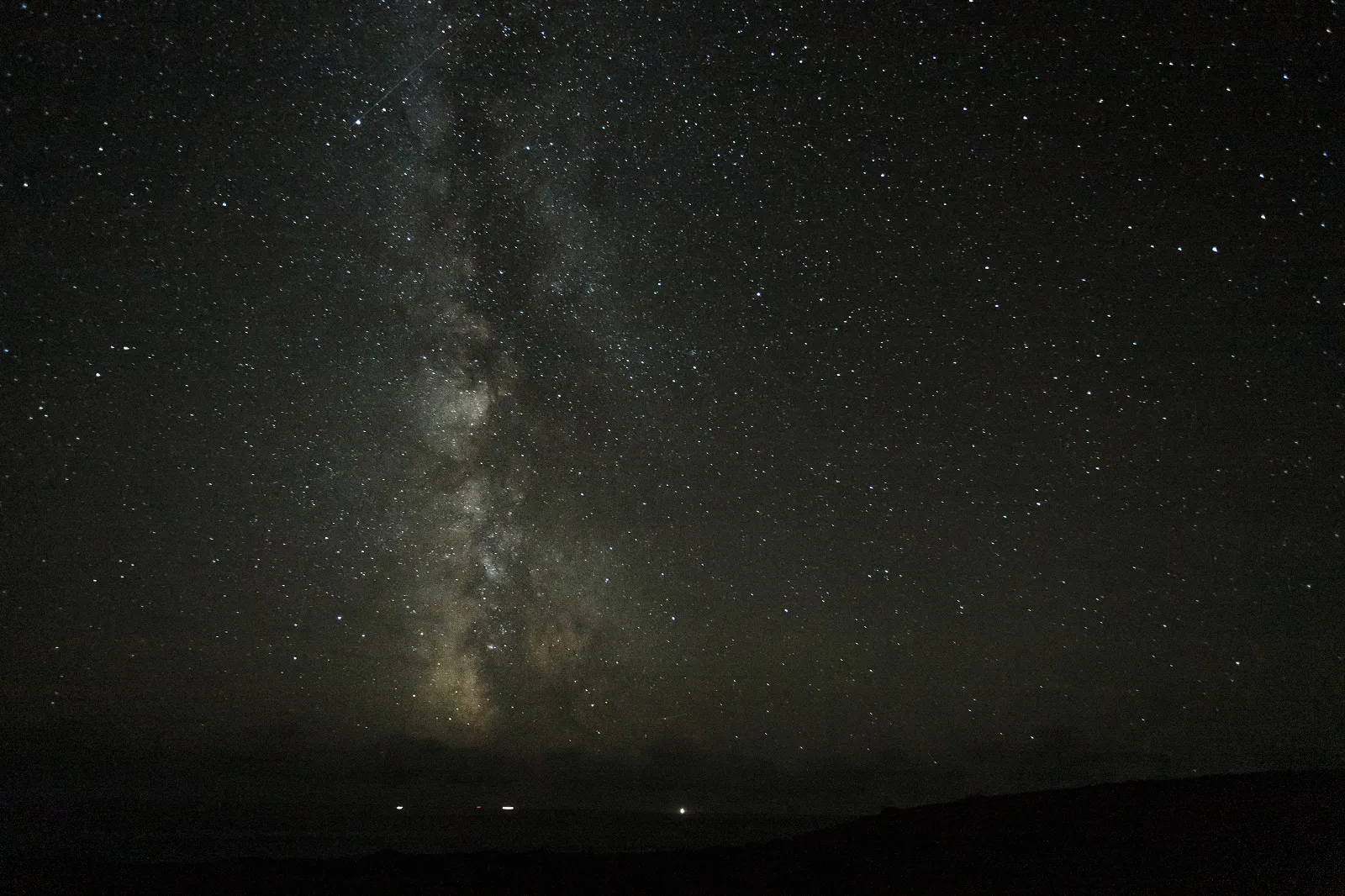
Waves crash against rugged shorelines and the air takes on a crisp, invigorating chill. Cornwall unveils a different kind of magic during the autumn and winter months. The season for a change of pace, a chance to embrace the coastal environment and relish precious downtime.
Summer by the sea has much to offer, then as the days shorten and the landscape shifts into its next season mode, it’s time to slow down, stretch out and look up.
You can’t beat the autumn and winter for stargazing. From September through to March, the stage is set for the perfect conditions to gaze at the stars.
Fancy staying in a holiday retreat with a hot tub? Check out our cottages with a hot tub for a relaxing getaway.

Starry skies over Gwennap Head, West Penwith
Image credit: Graham Gaunt Photowork
Bodmin Moor is among the best locations nationwide to turn your eyes skywards. In 2017, the majestic granite moorland was awarded an International Dark Sky Park accreditation – the first to be given to an Area of Outstanding Natural Beauty (AONB) in the UK. This means that night-time levels of artificial light are extremely low, creating pitch-black conditions in which to admire celestial sights. And with ancient monuments all around – from stone circles to burial mounds – the past feels within touching distance. To see the stars in a dark night sky as our ancestors would have done thousands of years ago is an awe-inspiring experience.
A second Cornish region recently gained the same accreditation. West Penwith – ranging from near St Ives to St Just to Mousehole was added to the roster in 2021. Unlike Bodmin Moor, West Penwith is a sweeping coastal habitat, which offers the opportunity to enjoy dark skies from a clifftop vantage point and picturesque ruins of tin mines silhouetted against the sea.
Thinking about staying in St Ives? Have a look at our luxury St Ives holiday properties.
With luck, you may see the spectacular colour of the aurora borealis, or Northern Lights, when the night sky is filled with dancing shades of pink, green, yellow and violet. Though only rarely seen further south than Scotland in the UK, the colourful phenomenon graced Cornish skies twice last year.
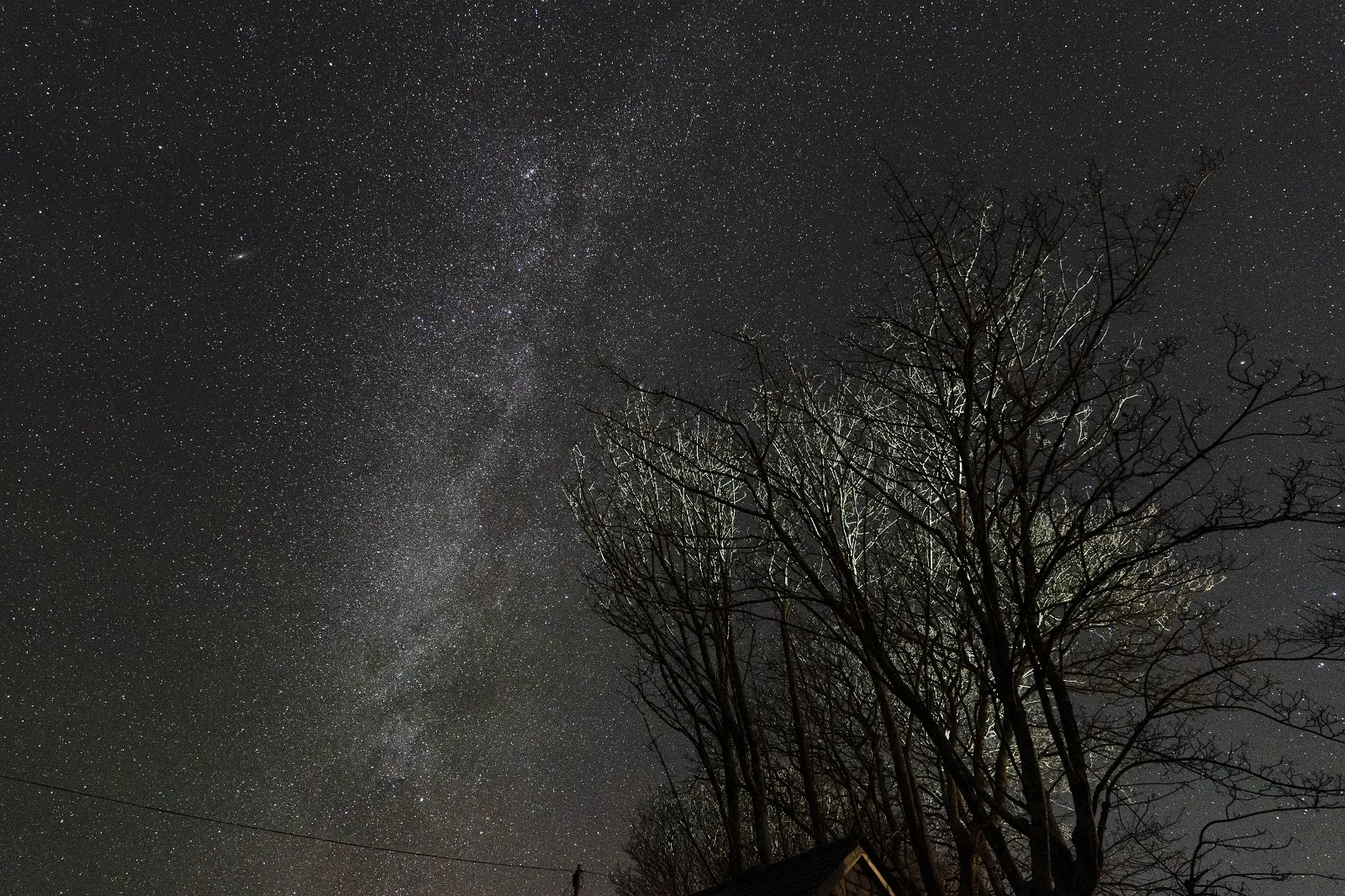
Image credit: Graham Gaunt Photowork
The cosmic calendar is filled with must-see events this winter. On 28 October, the UK will witness a partial lunar eclipse, as the moon passes through the earth’s shadow; turn your eyes to the skies at 21:15 for the maximum eclipse.
In December, the Geminid meteor shower will see up to 150 meteors per hour dashing through the night sky, making it one of the best displays to see this year. And as the shower’s peak on 14–15 December coincides with the crescent moon, the sky will be left dark, meaning viewing conditions should be perfect. Moonless nights offer the best opportunity for stargazing – if you want to admire the Milky Way, for instance, time your viewing with the new moon.
On 22 December comes the winter solstice: the shortest day and longest night of the year. This needn’t be gloomy – far from it. The annual Montol Festival in Penzance on 21 December aims to revive ancient pagan traditions to joyous effect. Six days of celebration – including storytelling, folk music and mask- and lantern-making workshops – will lead up to the main event on 21 December, in which a procession of picturesquely-costumed figures parades through the town.
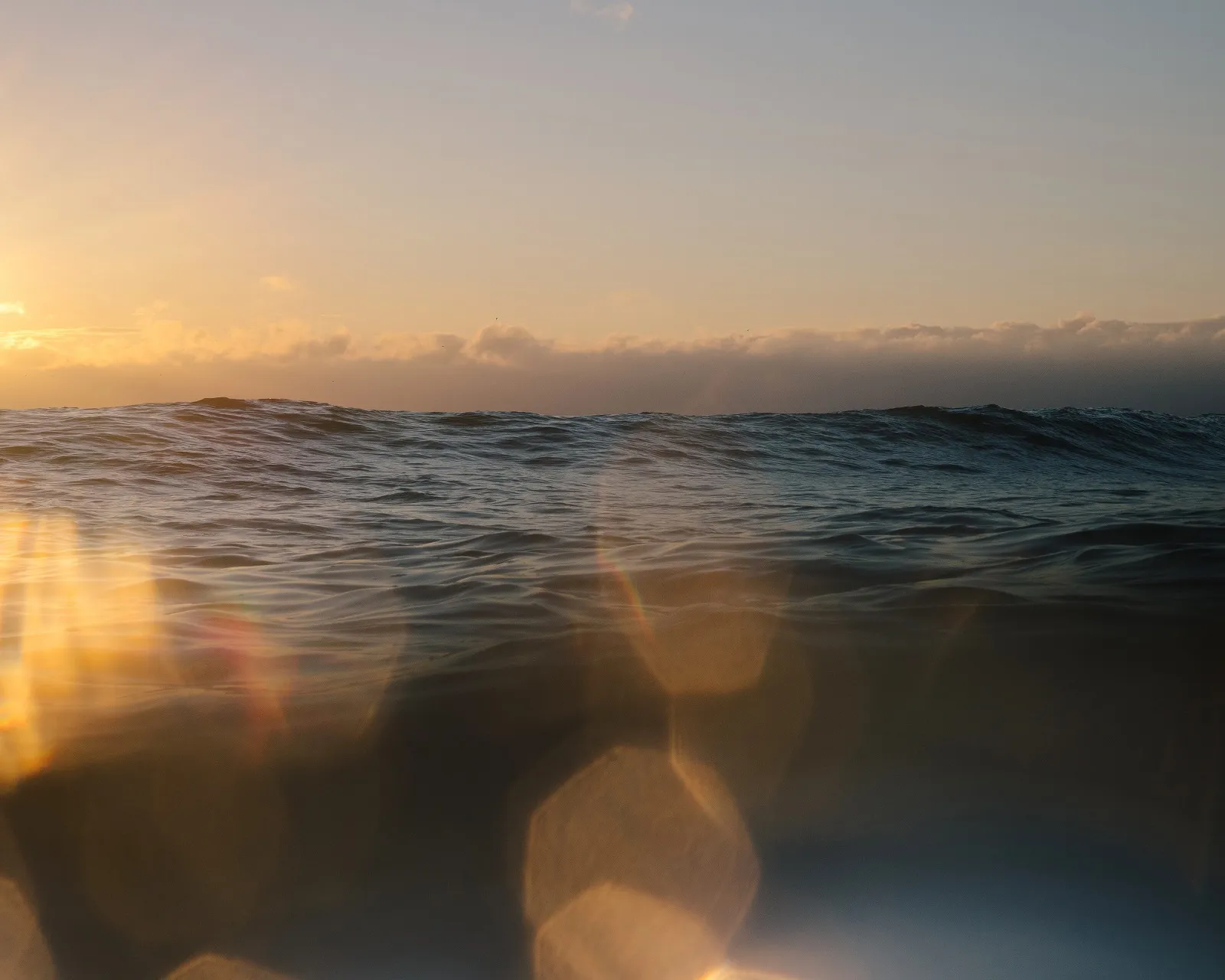
Image credit: Bella Bunce
The winter months are the perfect time for bracing coastal walks. The South West Coast Path along the rugged cliffs and hidden coves of north Cornwall offers breathtaking views of the Atlantic Ocean. Bundle up, bring your camera, and set out for an invigorating hike.
You might even catch one of the season’s most dramatic spectacles: storm watching. Head to a cliffside viewpoint and witness the power of the ocean as it crashes against the cliffs and sends waves soaring into the air. Then there’s the prospect of taking it all in from a beach side retreat, or retreating back there for a mug of cocoa after facing the elements.
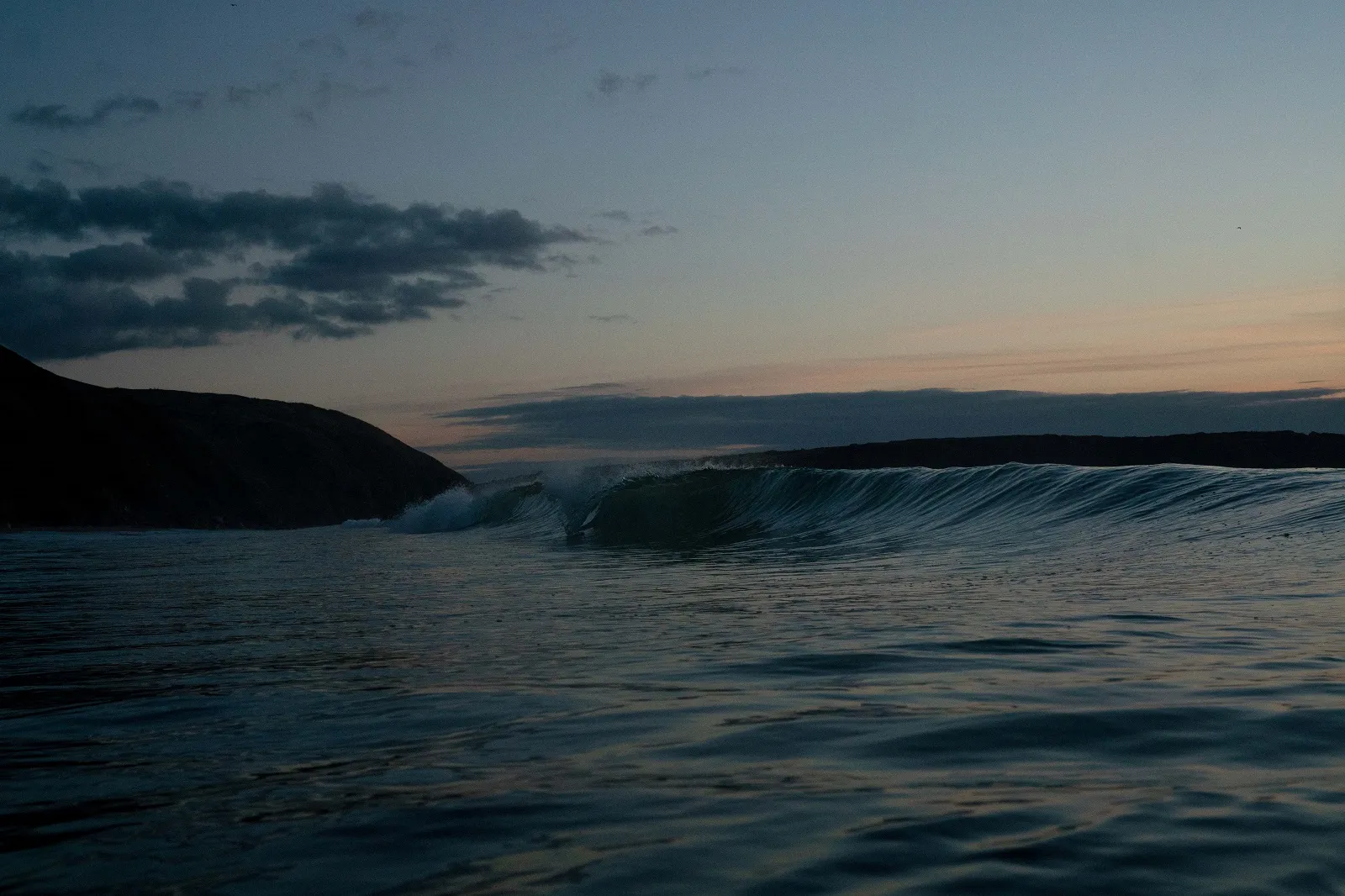
Image credit: Bella Bunce
For keen swimmers or those game for a short cold water dip, secluded sea pools offer protection from the wildness of the waves, and local favourites include Bude Sea Pool and Treyarnon Bay Tidal Pool, near Padstow. For something less exhilarating and more relaxing the geothermal pool at Jubilee Pool in Penzance is open all year round, filled with seawater that’s been geothermically warmed to a toasty 35 degrees.
Winter is an excellent time for wildlife enthusiasts to visit. As mainland Europe freezes, the Cornish coast becomes a hub for both resident and migratory bird species, including puffins, gannets, and razorbills. Look out, too, for flocks of brent geese and wigeons arriving from the Arctic, seeking refuge in the mild Cornish climate. The cliffs provide ideal vantage points to spot these majestic creatures as they soar along the coastline.
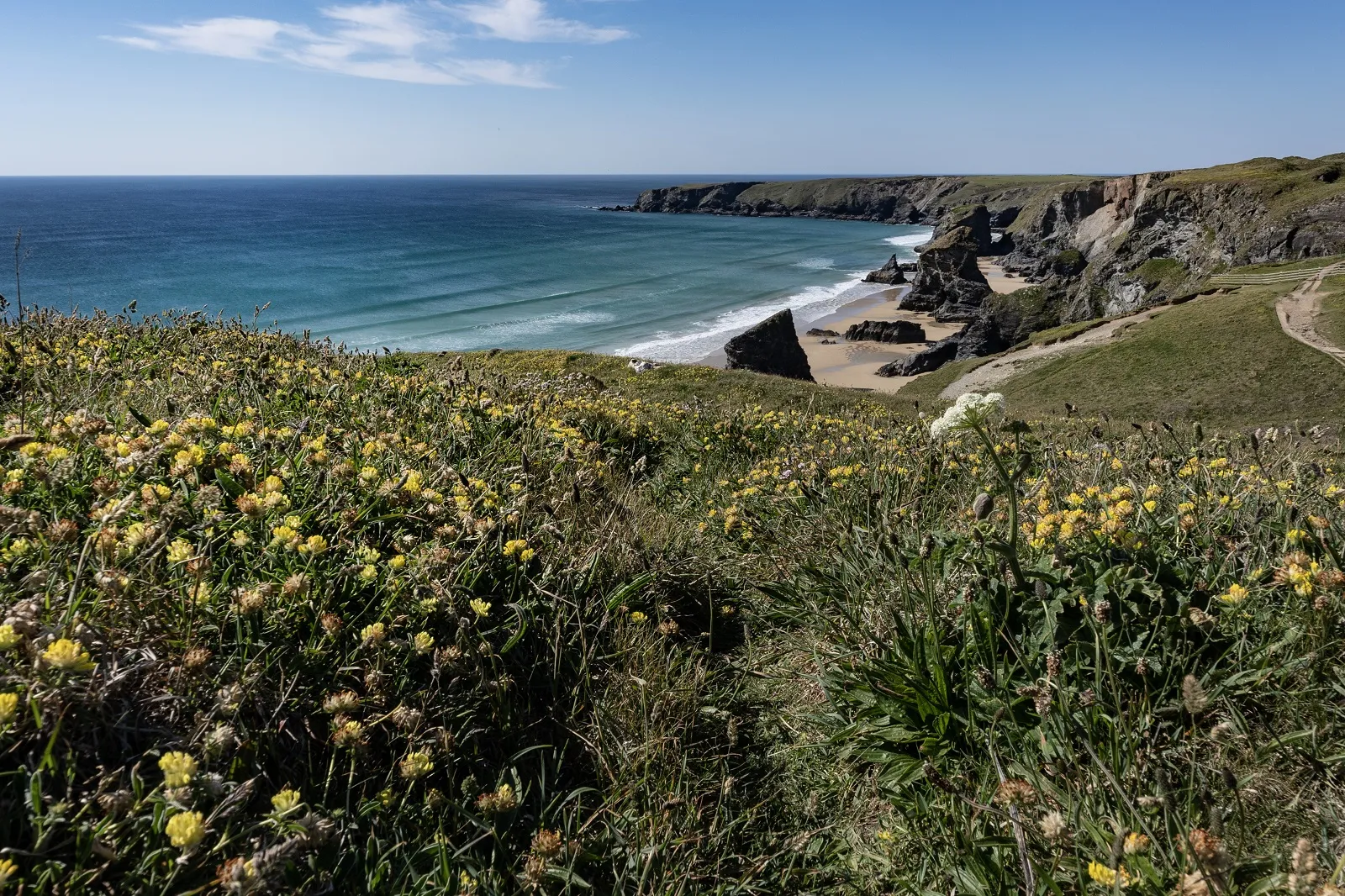
Image credit: Graham Gaunt Photowork
Some of the best places to bird-watch include the internationally-important Maer Lake Nature Reserve near Bude, Middle Amble Marsh and Walmsley Sanctuary, both near Wadebridge, and Windmill Farm Nature Reserve on the Lizard. And to combine heritage sights with natural wonders, you can’t do better than a trip to St Michael’s Mount in Marazion, near Penzance. During winter, hundreds of thousands of starlings gather here to swoop in their impressive formation – known as a ‘murmuration’ – at sunset.
You may even be lucky enough to witness seals and dolphins playing in the brisk waters. Grey seals haul themselves ashore to have their pups in autumn and winter, and there are spots around the coast to observe seals at this time of year from safe vantage points. Bottlenose dolphins, common dolphins and harbour porpoises are frequently seen off the Cornish coast year-round.
Whether seeking adventure, carving out some precious downtime, or looking for both, the autumnal and wintery coast has something to offer every traveller.
Experience the mesmerising allure of the sea with the sensational sea, where each moment is immersed in the beauty and tranquillity of coastal living.
Make your escape, experience #coastalwonder.…
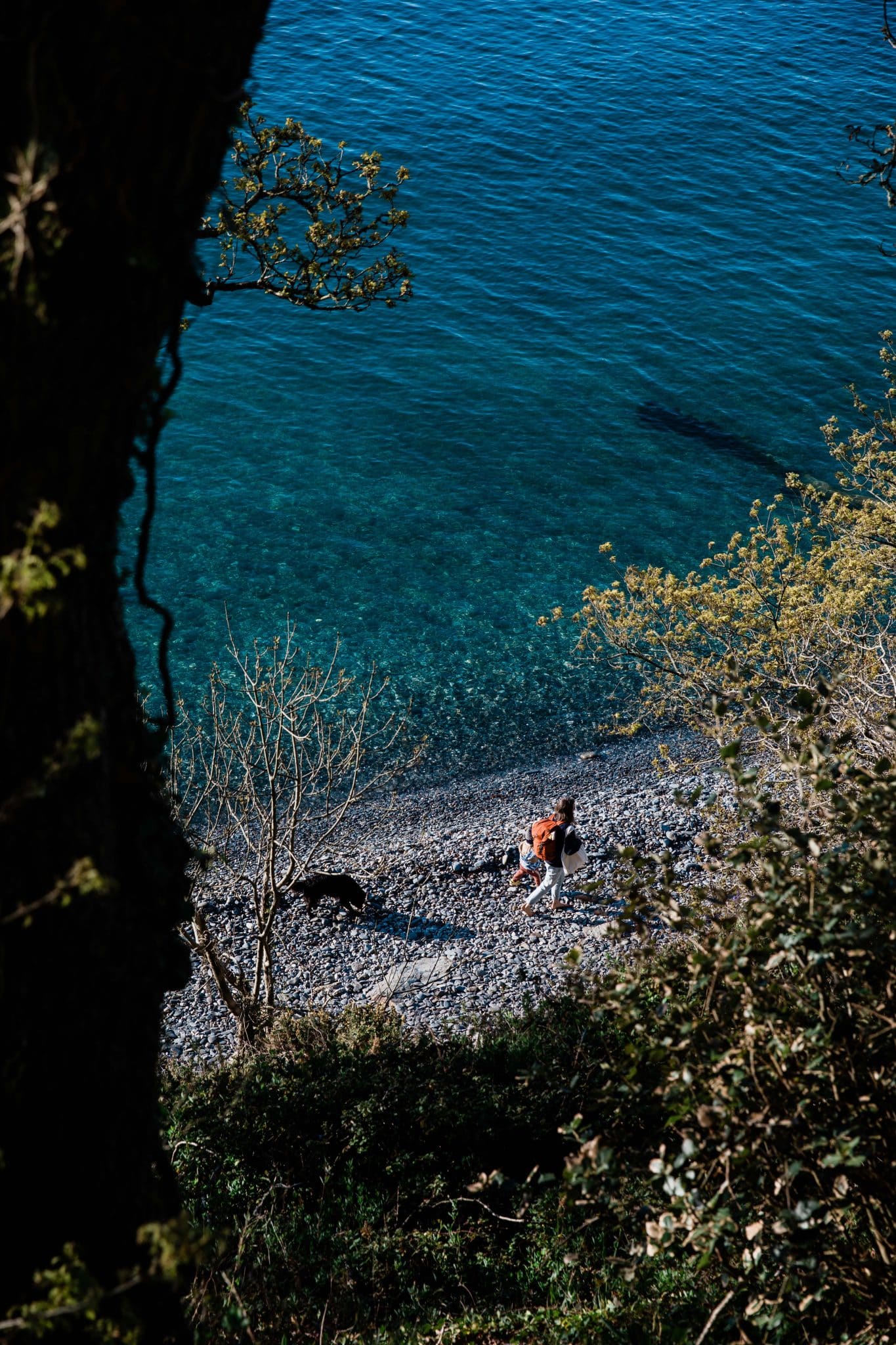
 Seeking samphire beside the estuary and seaweed in rocky pools. Julia Bird of seaweed pressers Molesworth & Bird and Caroline Davey of Fat Hen reveal stories of coastal discovery…
Seeking samphire beside the estuary and seaweed in rocky pools. Julia Bird of seaweed pressers Molesworth & Bird and Caroline Davey of Fat Hen reveal stories of coastal discovery…
Discover unbeatable savings and unforgettable experiences with Beach Retreats’ exclusive special offers.
The oldest fossilised seaweed, discovered in 2020, was found in one-billion-year-old rocks in northern China, making seaweed millions of years older than the distant ancestors of our land plants. Today there are over 650 different species of seaweed around Britain’s coasts which have for centuries been a source of fascination for artists.
Anna Atkins’ British Algae: Cyanotype Impressions, published as a serial between 1843 and 1853 is a collection of cyanotype prints of seaweed. This early form of photography using paper treated with a light-sensitive solution that turns blue on exposure to light is thought to be the first published book illustrated with photography.
For Julia Bird, a Victorian collection of pressed seaweeds discovered by her business partner Melanie Molesworth in an antique shop over 20 years ago was the beginning of her journey to start foraging for seaweed along the Cornish coast, aiming to capture its ephemeral beauty through pressing.
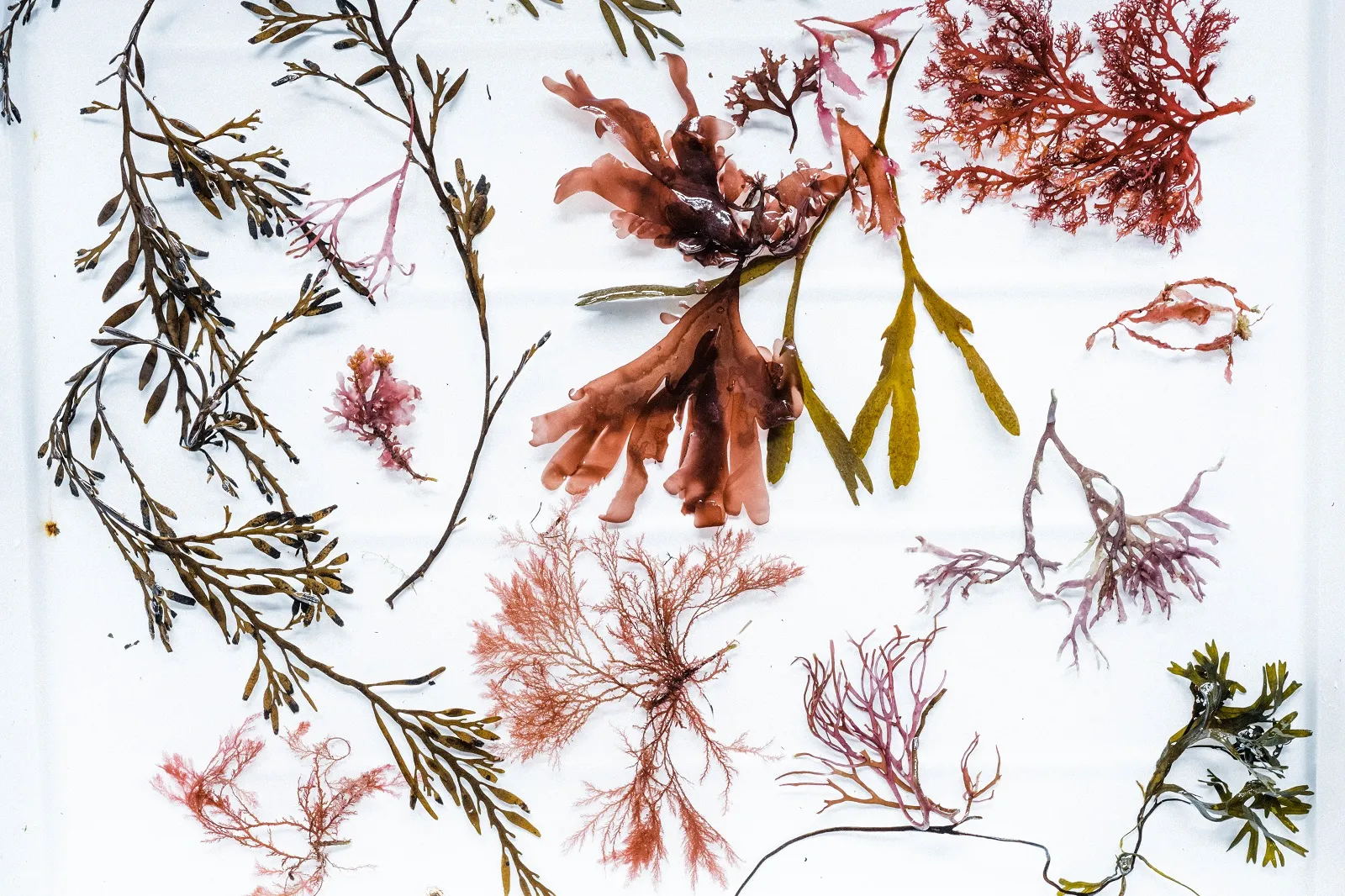
Image credit: Matt Austin
I’m a lifelong collector of nature really,” says Julia. “I’ve always collected whether it’s flowers or lichen or stones. And my whole life has been sort of sea orientated; I’ve always been a sea swimmer.”
After moving to Cornwall in the early 2000s, Julia started experimenting with pressing seaweed she had foraged when out swimming. “I started looking for seaweed and bringing it home and learning how to press, which of course back then there was nothing out there, you know, in those days. My first press was probably in 2004.”
After running a children’s shop in Fowey for 15 years, Melanie’s encouragement to start publishing her seaweed pressings finally came to fruition after Melanie moved, along with her collection of Victorian seaweed pressings, to Dorset. Discovering that the nine framed seaweeds in the collection were from the Dorset coast, the two long-term friends decided to team-up and created a calendar of prints from pressed seaweed for 2018.
And they haven’t looked back since. Molesworth and Bird can be found in Lyme Regis and online year round, and between April and the end of September in Fowey. Inside their shops hang limited edition prints and an ever-changing collection of unique pressed seaweed, gathered along the south west coastline.
“We can’t really see what’s beneath the sea surface. There’s a whole diverse and amazing world down there that we should all respect. Just walking along the beach you don’t see the beauty of seaweed because everything dries up really quickly,” says Julia.
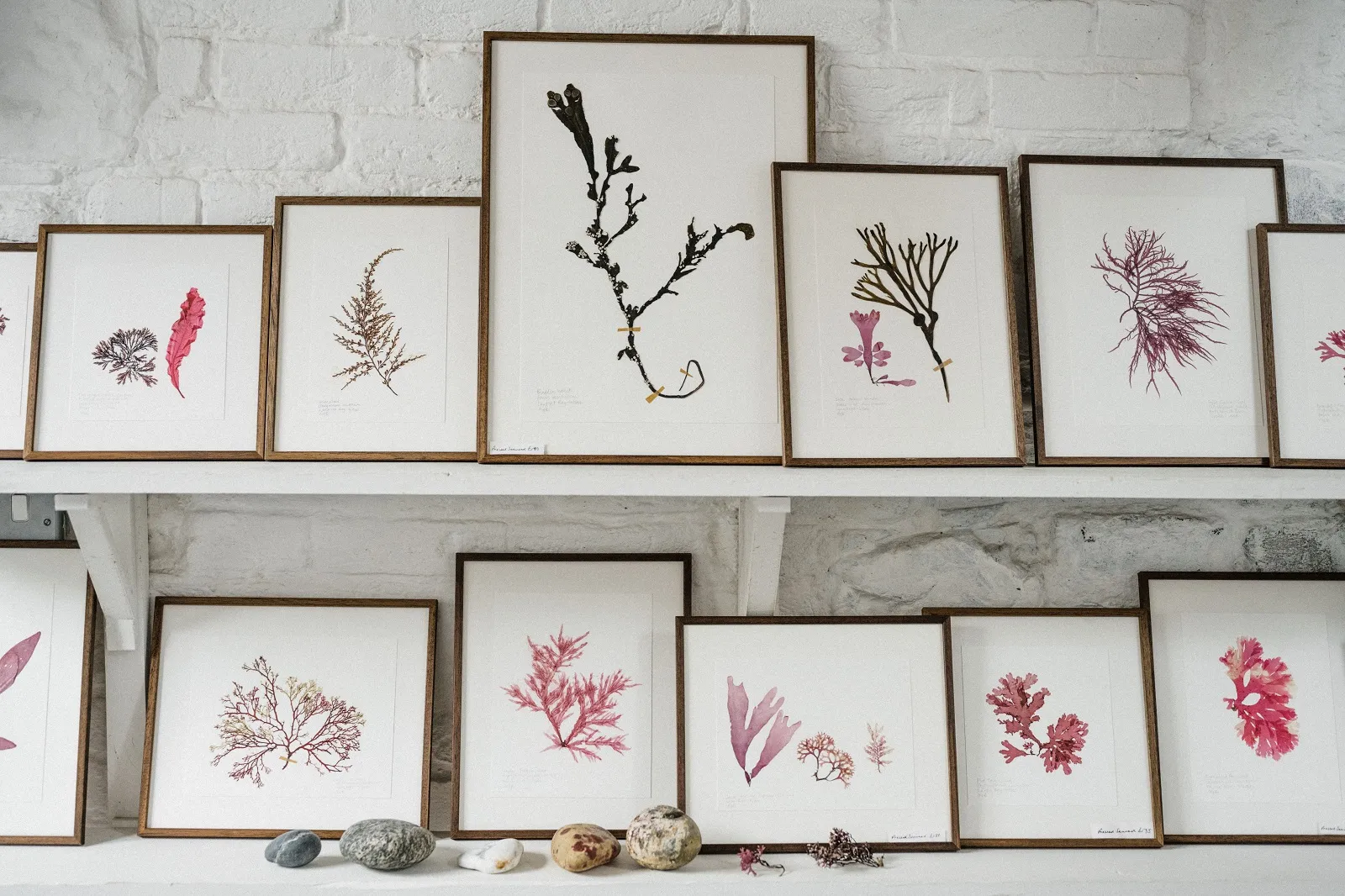
Image credit: Matt Austin
“The fine beautiful samples that we choose to press need water to support their form, so you only notice them if you’re in the water. I’m fascinated by the beauty and variety,” says Julia. “And learning about what a superfood they are, how each species has its own combination of vitamins, minerals and proteins.”
For Julia, revealing the beauty of this “garden under the sea” has an important role to play in restoring and protecting it. “For me, it’s partly if you know there’s a beautiful world under there you can foster that respect and love we need to maintain it and look after it.”
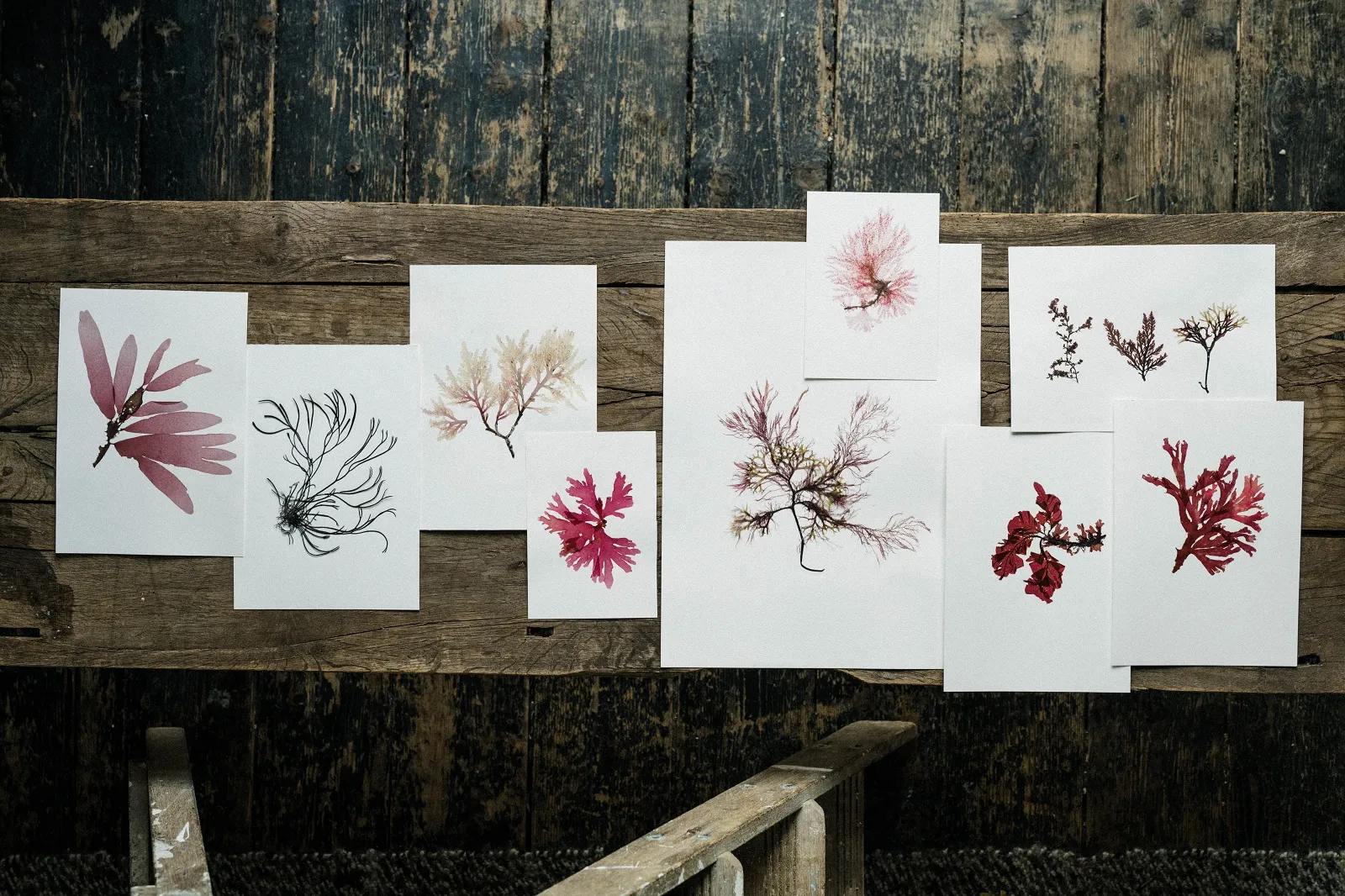
Image credit: Matt Austin
For Caroline Davey of Fat Hen, the wild cookery school, summer is all about the estuary and salt marshes. “This time of year is when marsh samphire is coming into season, that’s June to September. There’s also sea purslane, sea blight and sea arrowgrass, which is like coriander; these are all species that grow in estuaries and salt marshes.”
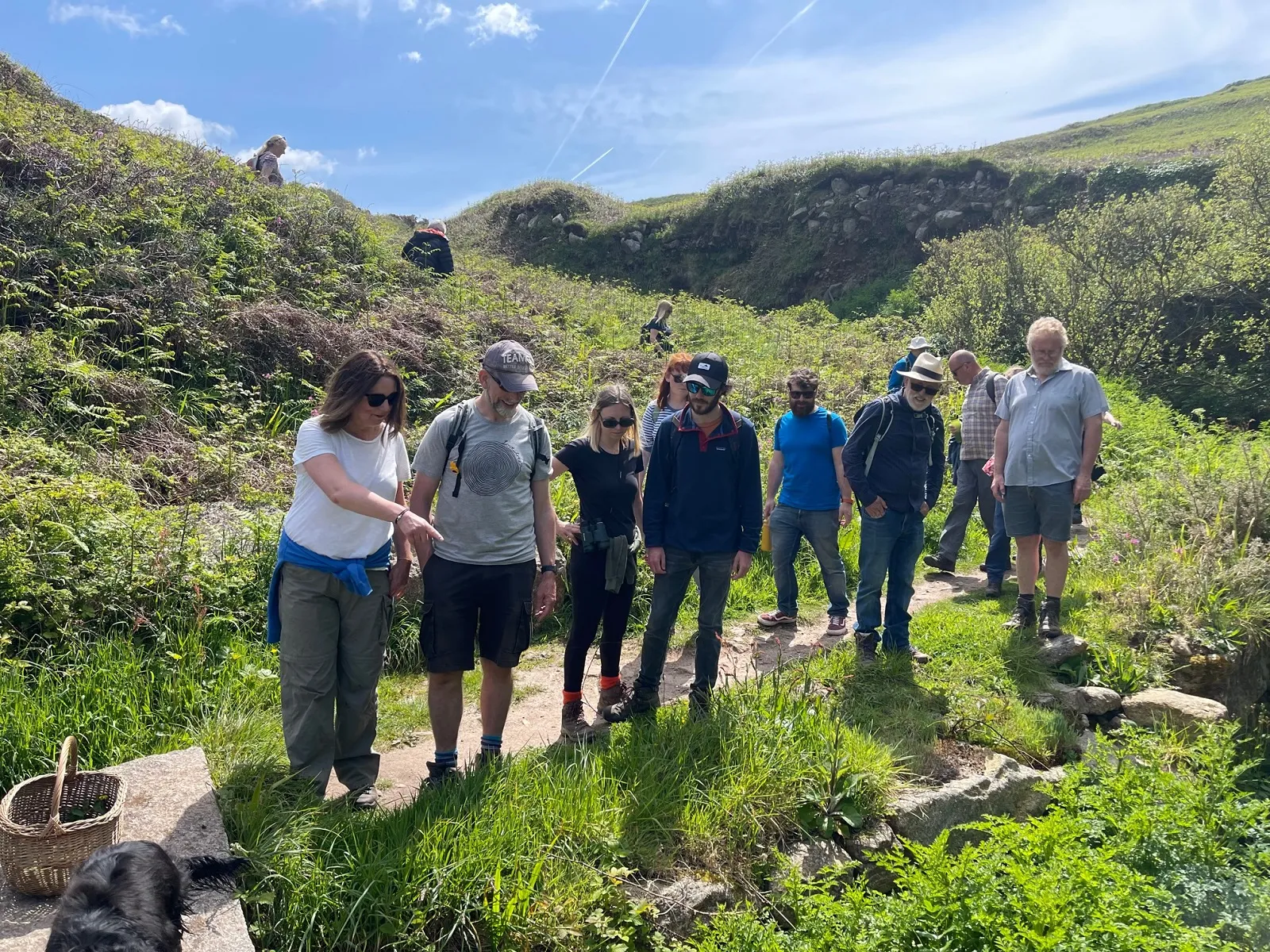
Image credit: The Fat Hen Cookery School
Caroline is running a number of coastal Fat Hen foraging courses this year, including a recent foraging walk along the coast path followed by a four-course lunch at the Gurnards Head near Zennor in west Cornwall, and a foraging walk, wild picnic and wild spa day near the Helford river on dates in June, July, September and October. All revealing hidden tastes and produce growing wild around the coastline.
She says it’s a time of abundance across the countryside beyond the sea: the plant fat hen – the vernacular name for chenopodium album – found across the country is in season, including its coastal relative spear-leaved orache, which can be used as a spinach alternative.
Caroline says wild cabbage – which grows on clifftops around the coast – is coming into flower now with the leaves and flowers able to be picked.
“And of course there’s plenty of flowers through the summer. The flowers of rosa rugosa or Japanese rose are absolutely fantastic. It’s not strictly wild: it’s planted as a coastal hedging plant and it escapes into the wild. You can also find black mustard flowers, sea radish flowers, sea cabbage flowers and elderflowers.
“I’ve just been picking hawthorn flowers and blossom for tea; they’ve been massively in bloom recently.”
And as the flowers fade, there are seeds to be scavenged. “Sea radish at some point soon will be forming seed pods and if you catch them early enough they’re like three or four bobbles in a row with the taste of a crunchy radish, perfect for scattering on salads.”
From estuary banks to clear blue pools, reveal fascinating finds along the coast.
Find your place by the sea, a walk from door to shore
Uncover the enchanting allure of Fowey’s no-drive delights, where every corner offers a new adventure and relaxation awaits just a stone’s throw away.
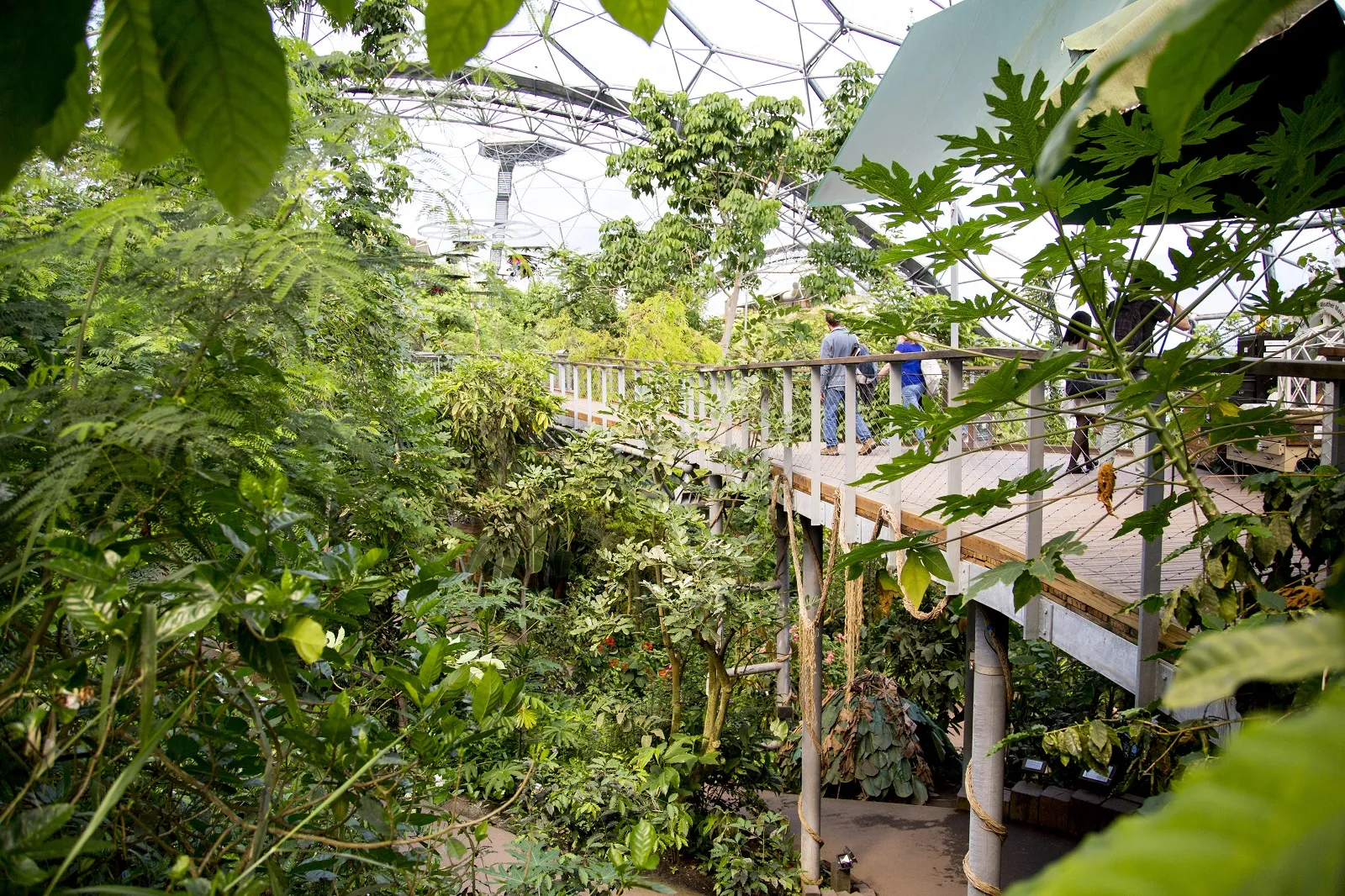
Beyond Cornwall’s sandy beaches, you’ll find exquisite gardens, cultural attractions and a rich history. If you’re planning a trip to Cornwall for the first time and aren’t sure on the best places to visit, we’ve produced a list of the top 10 must-see places in Cornwall, ensuring you won’t miss a thing on your holiday.
Find out why Christmas time is the best time to visit Cornwall and some of our holiday retreats to stay in at Christmas time.
A unique and innovative eco-project, the Eden Project is an absolute must-see on your visit to Cornwall. This stunning global garden consists of tropical biomes the size of 30 football pitches, including the rainforest biome, home to 1000 species of tropical plants, a fully running waterfall and a suspended canopy walkway. Adjacent to this you’ll find the Mediterranean biome, filled to the brim with spiky cacti and ancient olive trees. The site also has an impressive stage where the Eden Sessions are held, seeing performances from world-famous musicians, an ice rink in winter and a science centre featuring fascinating and educational installations.
Image credit: Matt Jessop via Visit Cornwall
Another unmissable activity is the South West Coast Path. Stretching for 630 miles and wrapping around the Cornish coast, it is an unforgettable trail featuring some of the most spectacular coastal vistas in the country. If you’re staying by the beach, you are bound to be close to a stretch of the path, on which you can set out on a variety of walks past dramatic cliff edges, fields of sea pinks and secret coves. All of our retreats are within walking distance to the coast and in easy reach to the coast path, meaning you can hop on it and head out on an adventure in no time.
Set off Marazion beach is this must-see tiny island, featuring an ancient castle and a cobbled causeway that disappears under the tide twice a day. When the tide is out the causeway is exposed, meaning you can take the 10 minute walk across to the castle. If you’re planning to get back to the mainland on foot, you’ll need to check the tides– the tide floods in faster than you might imagine, so always leave yourself a healthy margin for error. When the island is cut off by the tide, small boats run between the pier at Marazion beach and the harbour on the Mount. These run throughout the day in spring and summer but less frequently at other times.
Cornwall isn’t all just sandy beaches and sparkling oceans. Inland from the shores you’ll come across gardens rich in history and lush vegetation. The Lost Gardens of Heligan are perhaps Cornwall’s most famous gardens, and were rediscovered and reawakened following WW1.
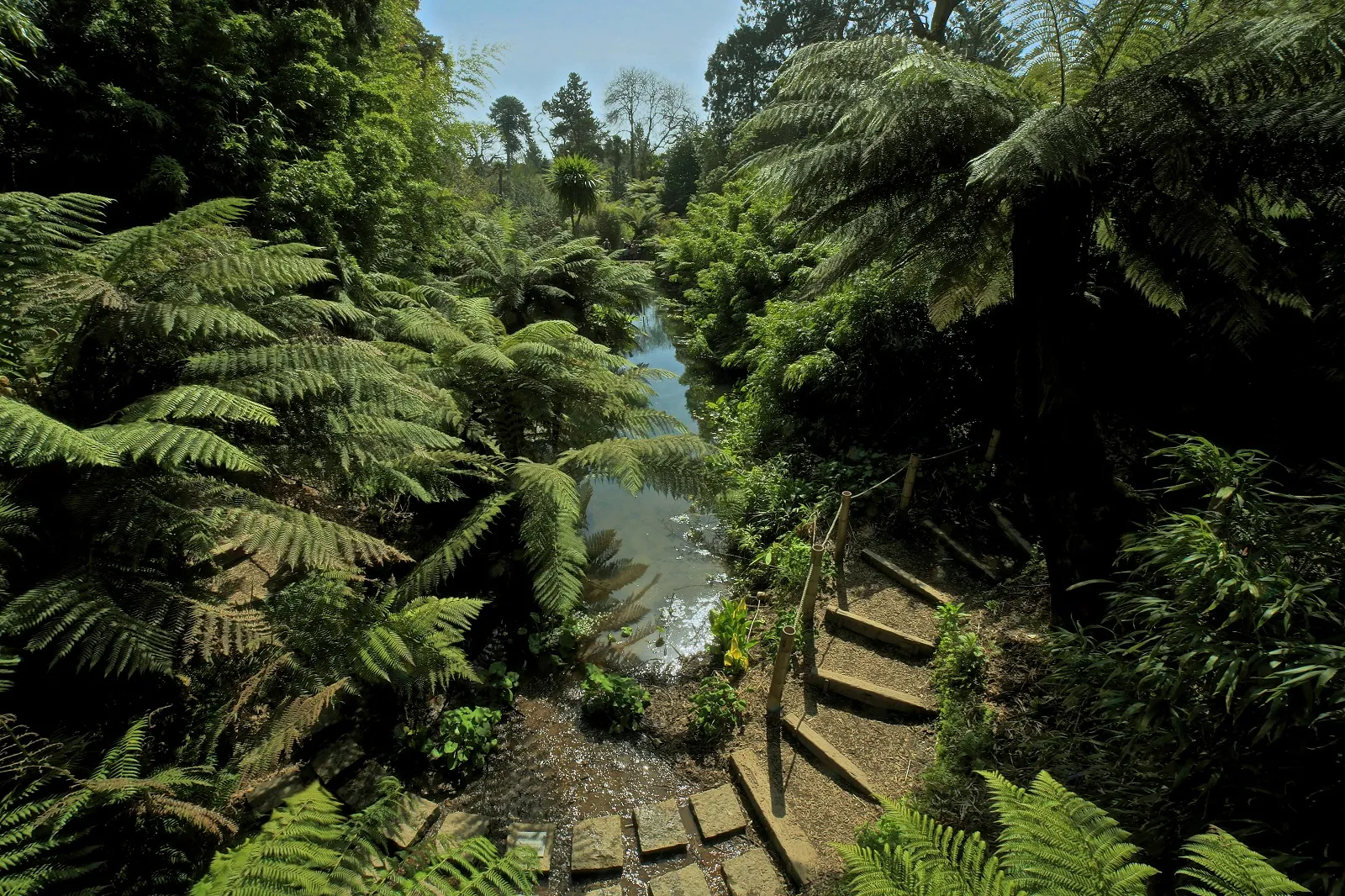
Image credit: Toby Strong
For breathtaking panoramas and untouched history, head to this sleepy Cornish town on the North coast which conceals a dramatic historical castle behind its village streets. You can walk up onto the cliff paths and have access to the castle, where you can uncover the tales of King Arthur.
Image credit: Matt Jessop via Visit Cornwall
Looking to get your fix of art during your stay in Cornwall? Head to the county’s best art gallery, the Tate, for a creative experience. It’s located in St Ives, the heart of the artistic scene in Cornwall which is known for its unique light which casts a soft blue glow off the sea. Here, sculptor Barbara Hepworth made some of her most influential work, much of which is showcased in the Tate and the nearby Barbara Hepworth Museum and Sculpture Garden.
Watch a play before dramatic clifftop panoramas at the Minack Theatre, an impressive open air theatre situated above Porthcurno beach. If the weather is obliging, the Minack feels like a tiny Greek amphitheatre; the sea here seems bluer than elsewhere in Cornwall, the sand of Porthcurno beach below appears whiter. The theatre was carved from the unrelentingly hard granite of the Cornish coast by Rowena Cade; it took many years of hard physical labour through the harsh coastal winters to construct and is a monument to dogged perseverance. The story is told at the Minack’s visitor centre, which is well worth a look even if you don’t see a play.
Cornwall is home to countless National Trust sites, from stretches of coast path to historical houses and gardens. Our particular favourites are Wheal Coates mine in St Agnes, the Roseland peninsula, Lanhydrock country house and Kynance cove in the Lizard. Browse their website to find your nearest National Trust site- they make for a great day out.
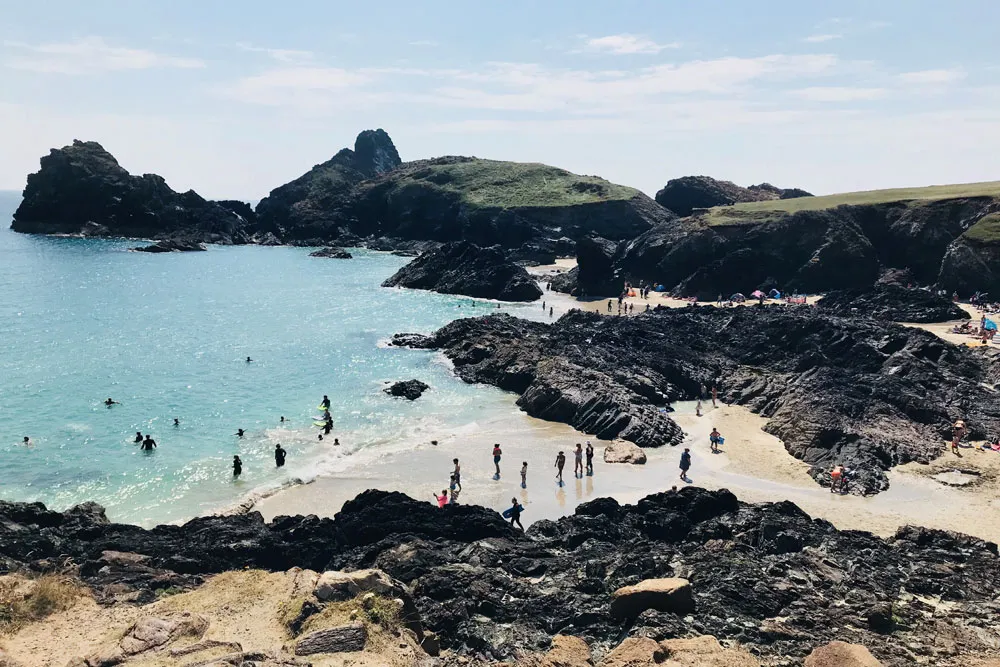
Fistral is the nation’s surfing capital and is known for its consistent waves, intense sunsets and lively atmosphere. When visiting Cornwall, it’s highly recommended that you try your hand at surfing – there are plenty of places in the town and on the beach where you can hire equipment and book onto lessons. Or, just sit back on a summer’s evening and watch the surfers rolling in when the swell is rising – it’s truly a must see.
Alongside acres of beautiful woodland, there are a handful of waterfalls dotted around Cornwall, often concealed deep into nature trails. Visit St Nectan’s Glen, near Tintagel and Boscastle, an area of woodland bursting with mystical tales of piskies and fairies. Here, you will find St Nectan’s Kieve, a spectacular sixty foot waterfall seen through a hole in the rocks. Or, visit Golitha Falls near Liskeard, a cascading waterfall set in a wooded valley.
Interested in finding the best walks in Cornwall? Check out our blog on our favourite autumnal walks.
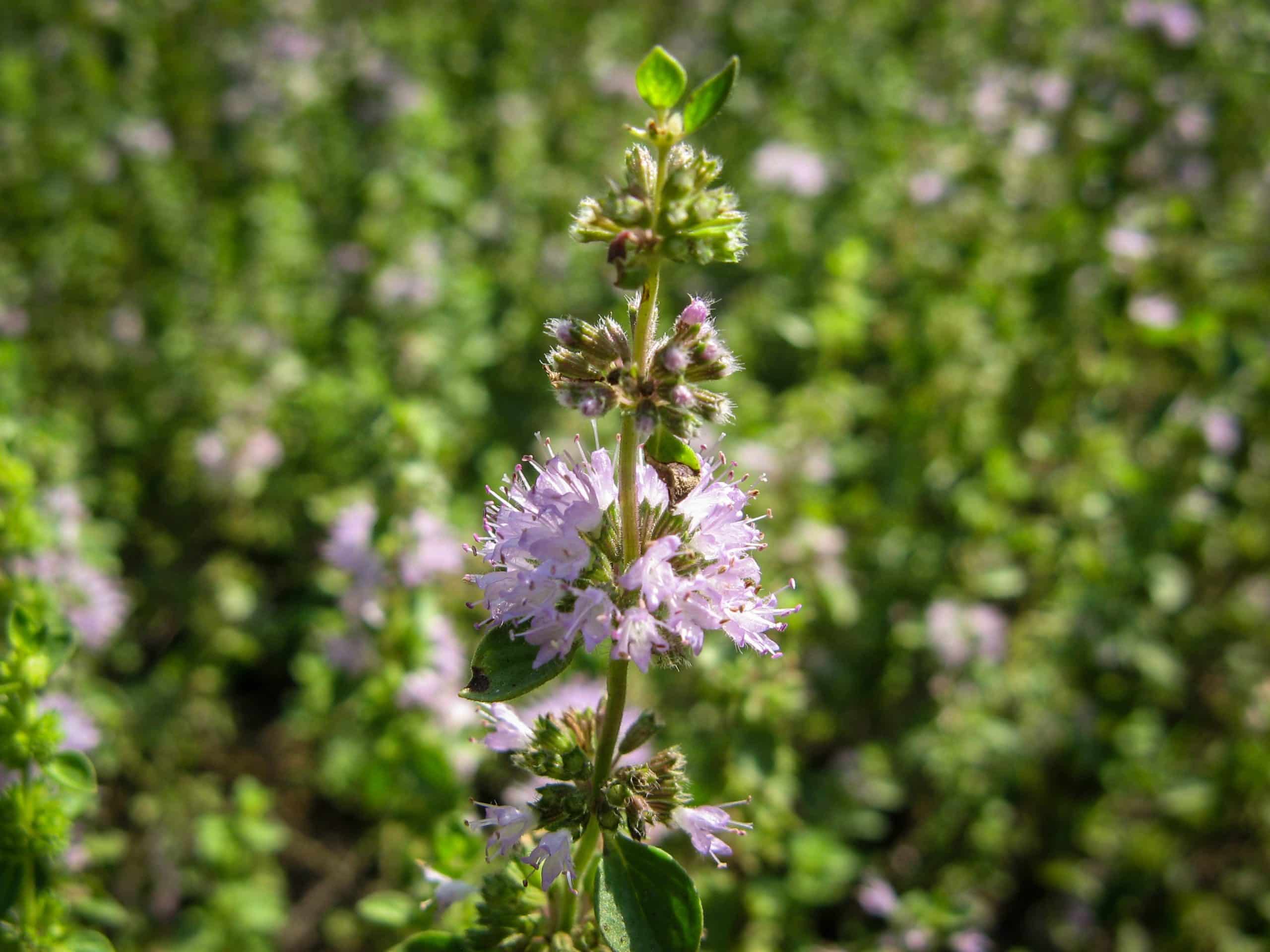
Smell is a uniquely powerful sense, generating strong reactions and evoking distant memories. As the long sunny days prompt more wild flowers to bloom, we explore the natural scents that shout out summer – with help from sustainable flower delivery business Petalon and natural bath & body brand land&water.
First off, we’re heading away from the salty air, surf wax and sun cream scents of the beach, to the coast path and deeper into Cornwall’s verdant undergrowth and hedgerows. Here you’ll catch the fragrant scents being released by plants and wild flowers coming into bloom.
With the first flush of spring now fading, there’s an abundance of flowering plants ready to step into the breach. From the sweet smelling honeysuckle climbing over its hedgerow fellows, to the aromatic leaves and tiny lilac flowers of pennyroyal. Going by mentha pulegium in Latin, pennyroyal’s leaves can be steeped in hot water for a strong, wild mint tea.
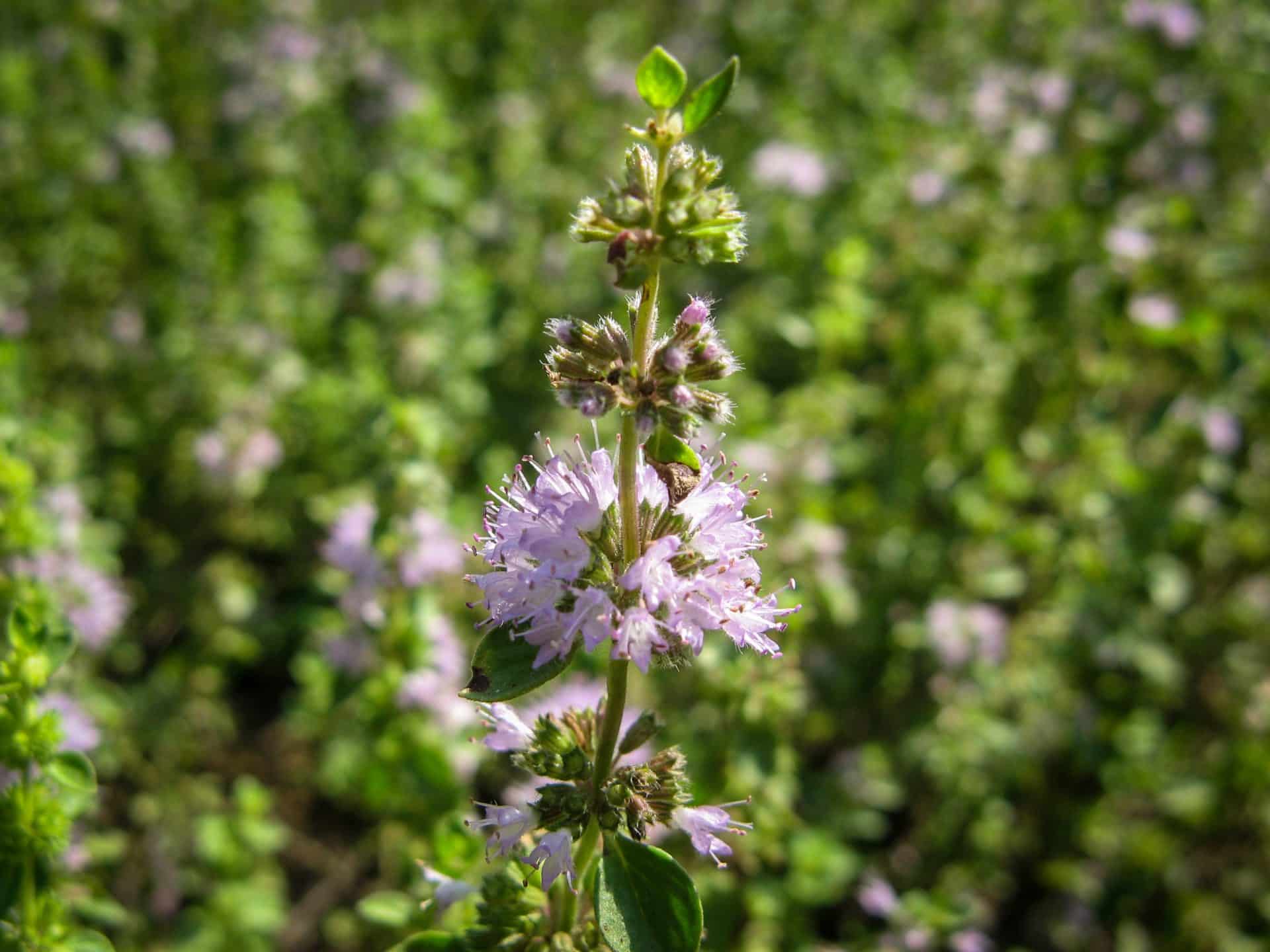
If you’re on the hunt for rarer scents than these among the undergrowth, The Lizard is where to head. Home to an ancient and unique geology, many rare species and sweet smells can be found in one of the UK’s most biodiverse regions.
Check out more of what West Cornwall has to offer and explore our holiday lets in The Lizard Peninsula.

Want to stay in a luxury holiday house with a view of the sea? Check out our cottages with sea views.
On a summer’s evening walk through fields, you might encounter the orange-scented smell of the fragrant orchid. On heathland or even sandy dunes, you might pick up the gentle fragrance of wild thyme – also identified by its purple-pink flowers between May and August, growing close to the ground. Chives, another fragrance reminiscent of the kitchen, grow wild on The Lizard, with its recognisable small pink flowers.
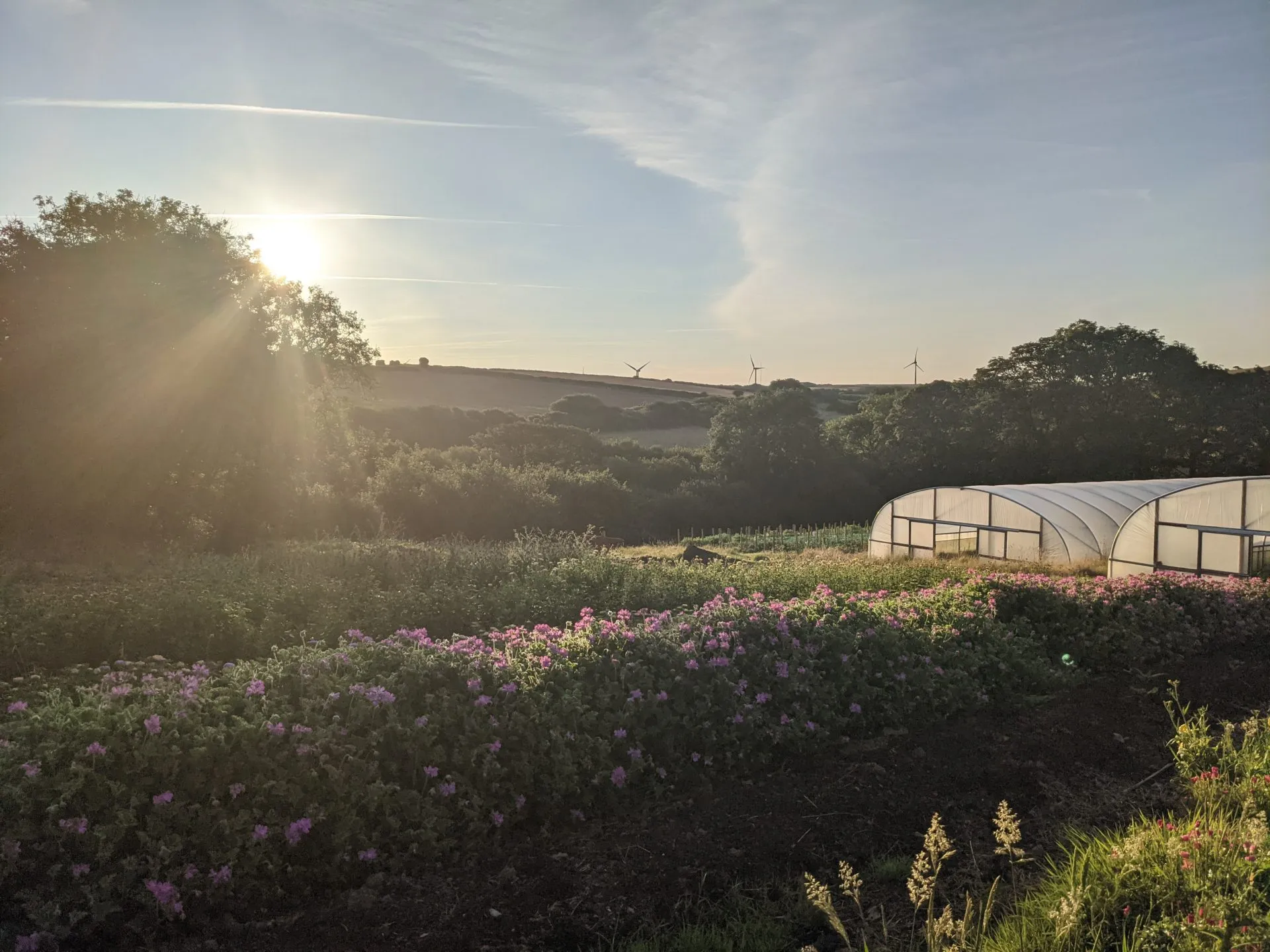
Image credit: Petalon
Surround yourself with the fragrance of summer blooms grown on these shores indoors… At Petalon’s Cornish farm, it’s a particularly busy time of year, says Petalon co-owner James. “We have to be in the field cutting flowers early enough to beat the day’s heat,” he explains. “Then we’re in the studio making up bouquets, by the time most people are thinking about setting off for work.
“In terms of the bouquets themselves, the summer is defined by abundance. Even the dwarf sunflowers we grow still have such large heads, and the delphiniums and larkspur are so tall, we can barely fit them inside the box!”
When it comes to bouquets for the nose, the Petalon team include a heady mix in their deliveries. “Sweet peas will continue through early summer and smell just amazing – particularly in a delivery bouquet, as their sweet scent really fills the box,” he says. “By late summer we’ll be using lots of mint and geranium stems, both of which have a deserving reputation for their incredible smells.”
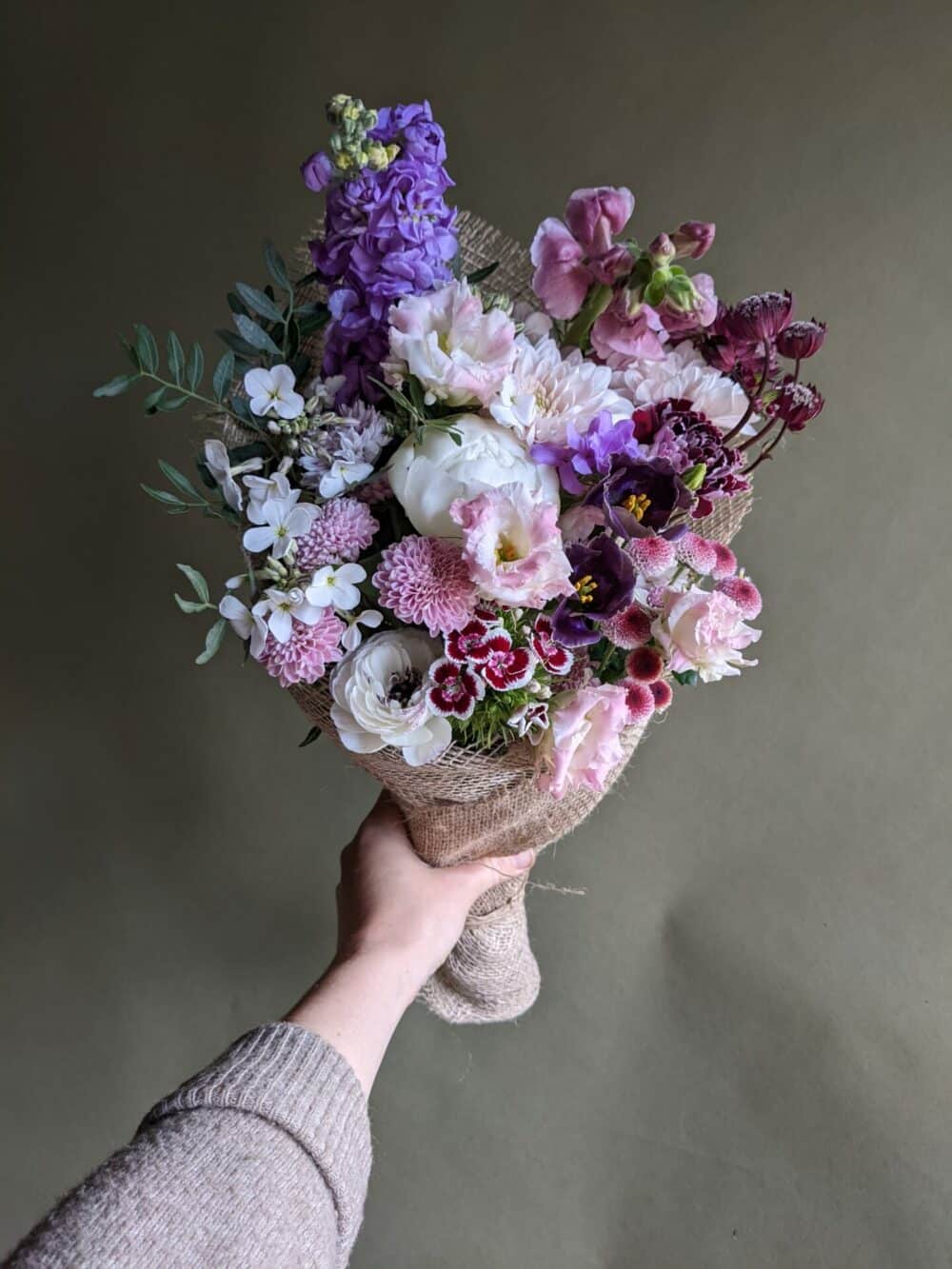
Image credit: Petalon
Other stars of the season are lupins, ready to send as the pink and purple varieties appear in hedgerows around the county. Then there are poppies, with a longer flowering life than those defying the odds to bloom along Cornish stone walls.
Alongside the rows of flowers for cutting, the hedgerows around the Petalon farm see the bright yellow gorse shining brighter than ever. “Gorse smells like sweet coconut to us,” adds James.
Waking up to seize the day or coming back indoors to relax after a day on the beach, what scents summon long summer days?
Pix Ashworth, founder of land&water, knows summer has arrived when she notices pairs of small-white domed flowers appearing on the woodland floor.
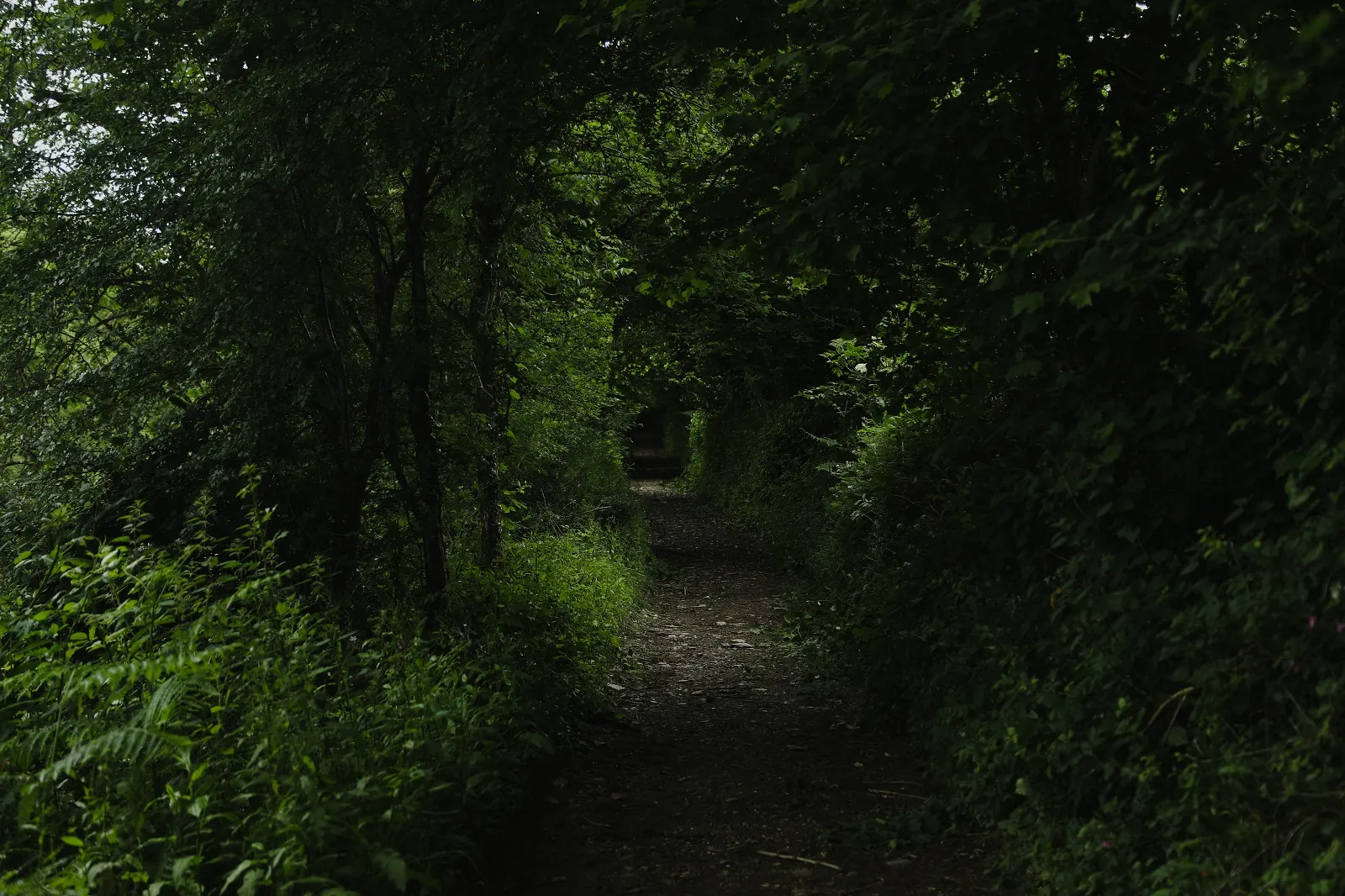
Image credit: Goodrest Studios for land&water
“Lily-of-the-valley signals the approaching summer to me; fresh, light and crisp,” she says. “For me, the longer days mean evenings on the coast path or in the garden witnessing explosive growth and fragrances. The ‘hot-lips’ Salvia (so-called for its bi-colours of red and white) is a big favourite for both its gorgeous minty aroma and its enduring flowers; I have several dotted around the garden.
“And I definitely have a mint leaning, using it wherever possible – be it in salads, summer drinks, or with new potatoes.”
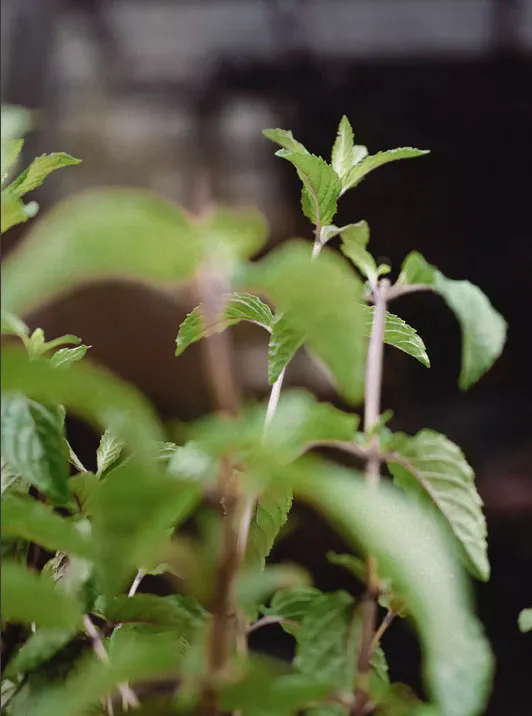
Image credit: Goodrest Studios for land&water
When it comes to time indoors, mint is a favourite fragrance for how it “draws the outside in, mimicking that big sky freshness”. For relaxing evenings indoors after long, active days outside, Pix opts for calming essential oils.
“Skin products containing chamomile, to soothe skin redness or irritation from too much sun or bites and stings; and sandalwood, for peace and calm, are a natural draw,” she adds. “Together with sweet almond oil and sea buckthorn oil, we use both these essential oils in our All Elements Skin Balm to help calm and rejuvenate.”
Pairings such as frankincense and clary sage also hold a lot of appeal for Pix, because blending scents is about achieving invigoration and relaxation, “that sweetspot of emotion”.
Indulge in the flavours of spring with fresh recipes, perfect for the season’s vibrant palette.
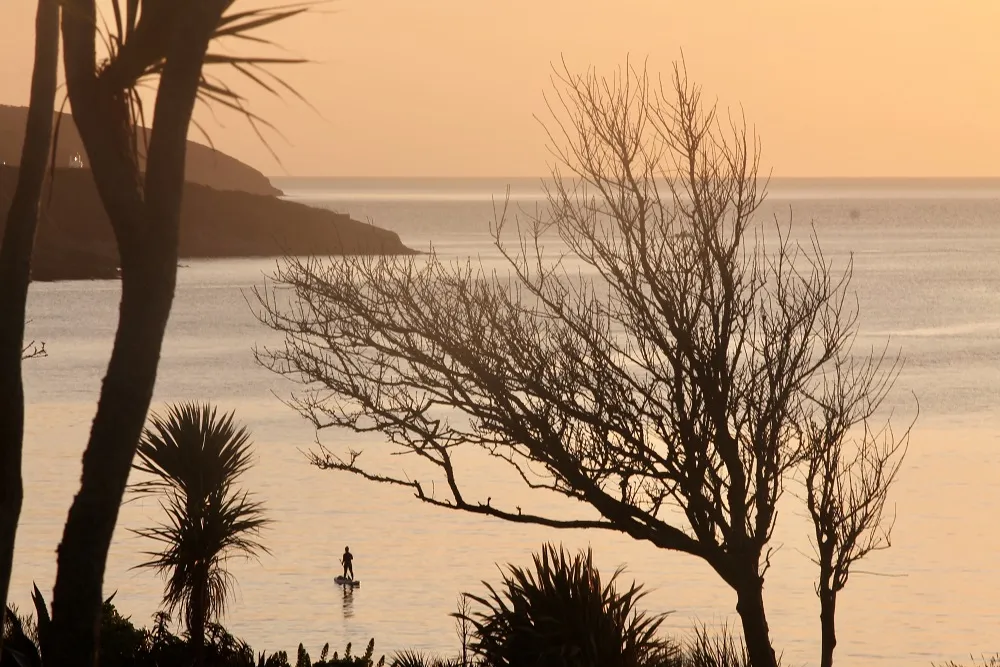
From the thrilling calm to the calming thrill, the ocean is a place of endless surprises whether it’s by, on or under the waves. In a series of posts, we explore what it means to get your energy from the ocean and the delightful contradictions you can embrace in every sea salt fix.
Visiting Cornwall for a workcation? Have a look at our holiday lets perfect for extended stays and working.

Credit: WeSup
From dawn to dusk and through the seasons, the ebb and flow of tides are in constant flux, creating a magical ocean playground. On the shoreline, on the surface or submerged in the deep, there are endless ways to play, and it’s the sea’s shifting moods that help determine your pace.
The quiet aftermath of a storm washes up beachcombing treasure, still waters keep a paddleboard balanced and rolling waves offer up ideal surf conditions. But is it as simple as measuring your adrenaline rush against the height of the break, or does ocean time have the power to do more?
Fancy staying in Padstow? Check out our luxury holiday lets in Padstow.
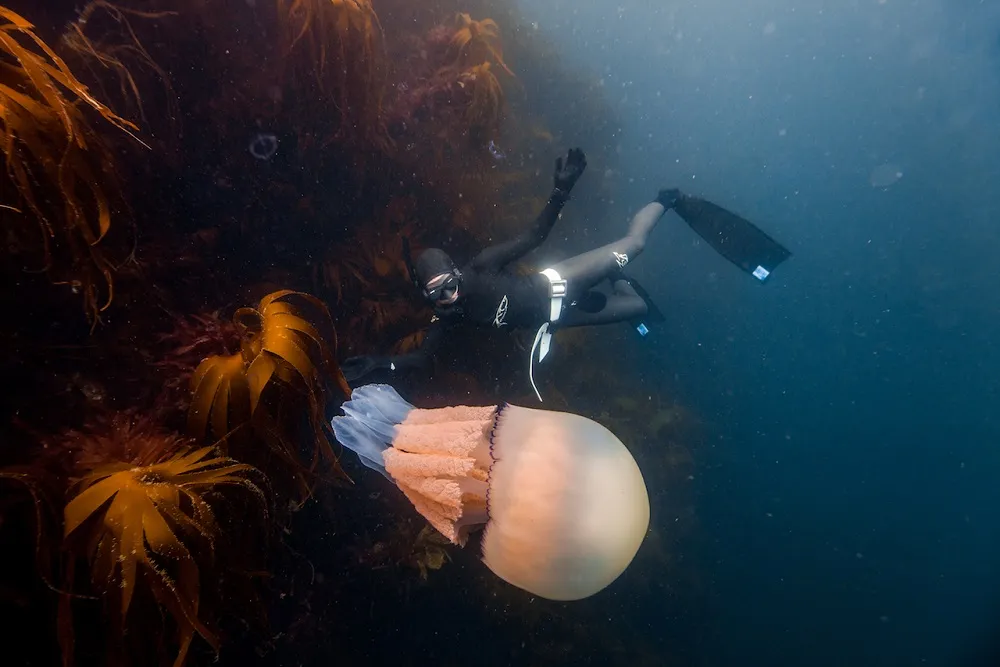
Credit: Aquacity
“We are inspired by water,” Marine Biologist Dr. Wallace Nicholls writes in Blue Mind: How Water Makes Us Happy. “Hearing it, smelling it in the air, playing in it… creating lasting memories along its edge”.
Nicholls explains that as humans, our calm, peaceful and content state of mind, which he terms ‘blue mind’, is stimulated by proximity to open water. That even just thinking about water is enough to trigger an emotional response, because all our senses are craving the full nature experience. So it’s not surprising that in the gentlest walk, the deepest dive or the most adrenalin fuelled charge, we can find moments of both serenity and exhilaration. Our bodies crave water time exactly because of its simultaneous ability to help us reset and get our hearts beating.
If you’re eager to embrace the marvellous contradiction of the ocean but don’t know where to start, we’re here to help. Over three posts we’ve caught up with ocean lovers who relish the fast and slow of their preferred water activities on the shoreline, on the surface and beneath the waves. So read on, leave your expectations behind and open your blue mind. Calming thrills and thrilling calm await…
Want a relaxing holiday in Cornwall? Check out our favourite spas and saunas for a truly relaxing getaway
Read about adventures of every pace: on the shoreline, on the surface or in the deep.
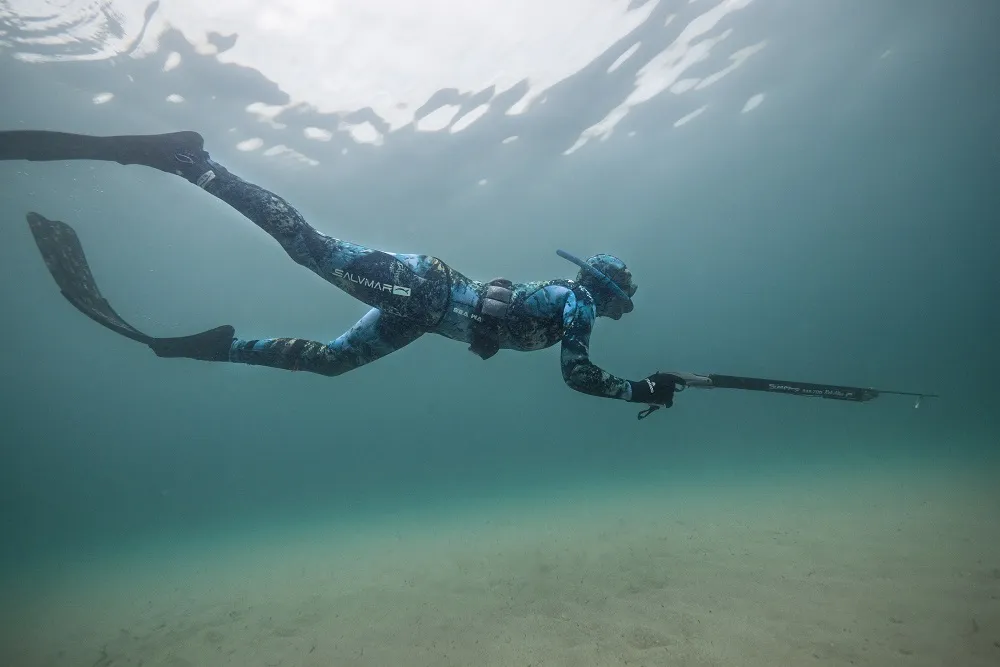
Credit: Chris Moakes
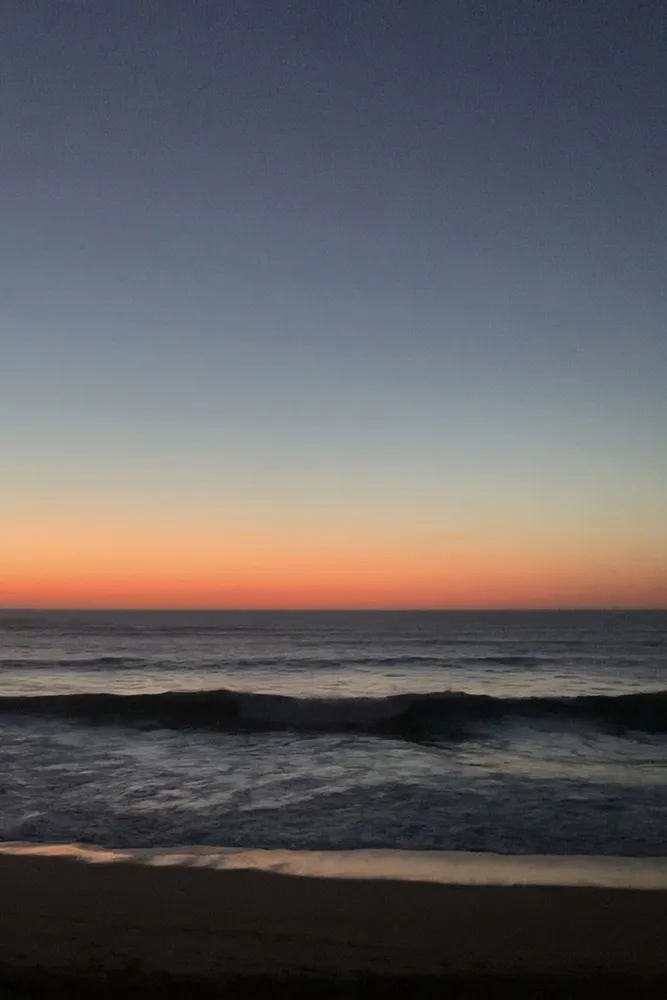
“A sculptor’s landscape is one of ever-changing space and light where forms reveal themselves in new aspects as the sun rises and sets.”
– Barbara Hepworth in Barbara Hepworth: Drawings from a Sculptor’s Landscape, 1966 barbarahepworth.org.uk,
Want to stay in a luxury holiday house with a view of the sea? Check out our cottages with sea views.
The sun rose just after 5 o’clock this morning; it will set just before 9.30pm. We’re in the daylight month and each day the summer sun creates stunning, relaxing and inspiring skies in those early or late hours. Staying steps from the shore means the freedom to enjoy those moments even more.
Coastal skies don’t hold claim to the most spectacular dawns and dramatic dusks but they’re undoubtedly among the best. Sharing an image by Kirstin Prisk (@kirstinprisk) of a sunset sky in St Ives this month, the Tate St Ives nodded to the unique light the sun creates there: “The town of St Ives has long been an artistic hub, attracting artists since the time of J.M.W Turner because of the beauty of the landscape and quality of natural light.”
That corner of coastal light has inspired artists since the 1930s, and around the British coast early risers and evening explorers are rewarded with colour shows to take the breath away.
Which are you, an early riser catching the first light or an out of hours dusk seeker?
We asked members of the Beach Retreats team to share one of their favourite phot0s out of hours at the beach. As you’ll see below, dusk comes out on top.
And if you’ve captured a great shot at the beach out of hours, why not share it with us on Instagram or Facebook – tag us @beachretreats and add #beachoutofhours – to be in with a chance of winning a land&water bathtime bundle and luxury Cornish hamper.
Lowenna in the Beach Retreats marketing team likes to catch the fading light as it disappears over the horizon. There’s no better place to watch the day slip away over the horizon than the sweeping vistas of the north Cornish coast.
This shot was captured on the sand dunes that lead down to the breaks at Fistral beach in Newquay. “I like to wait until the sun has completely dropped, to see the lingering glow on the horizon,” says Lowenna.

Open ocean
There’s no denying the sunlight on the sea creates some of the most awe-inspiring views of all. Steve, in our portfolio management team, also prefers the dusk light on the waves.
This photo was taken from Pentire Headland with the sun hovering just above the line of the ocean. “From here, you can see the entire stretch of the horizon glowing and the wide expanse of sea looks truly amazing at this time of day,” says Steve.
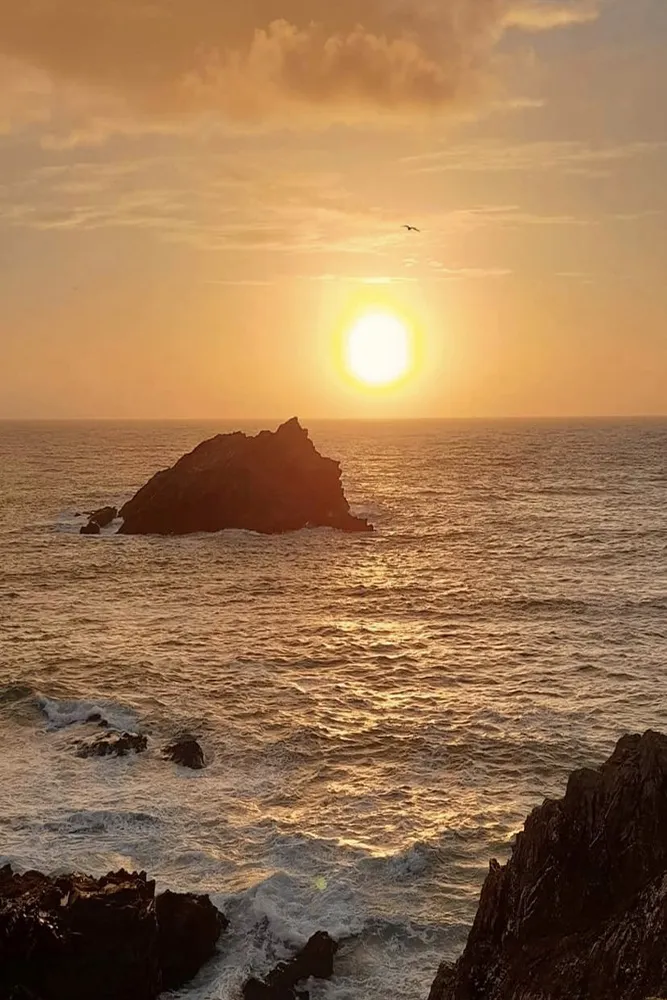
Low in the website team finds the lure of the water difficult to resist when the sunset colours the sky. This image was taken on Little Fistral beach in Newquay. “My favourite time of day is dusk, especially the moments just after the sun has set where the whole sky turns shades of pink, purple and orange.
“That day, the setting sun lit up the whole beach in these colours. It looked so magical we just had to go in for a swim at 10pm!”
Explore the wonders of sea and skies with our blog on how to make the most of your holiday with stargazing.
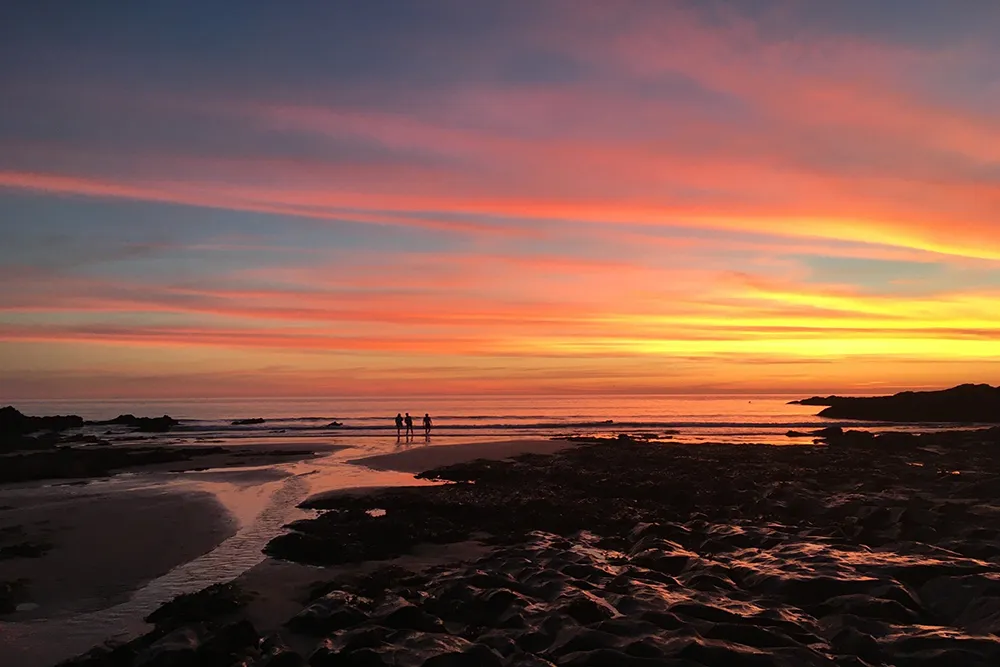
Dawn vs dusk
We’re asking our followers on Instagram and Facebook to choose their favourite #beachoutofhours time. Which will you choose, dawn or dusk?
Explore outside of Cornwall, with the coastal charm of North Devon with Beach Retreats, where relaxation meets adventure.
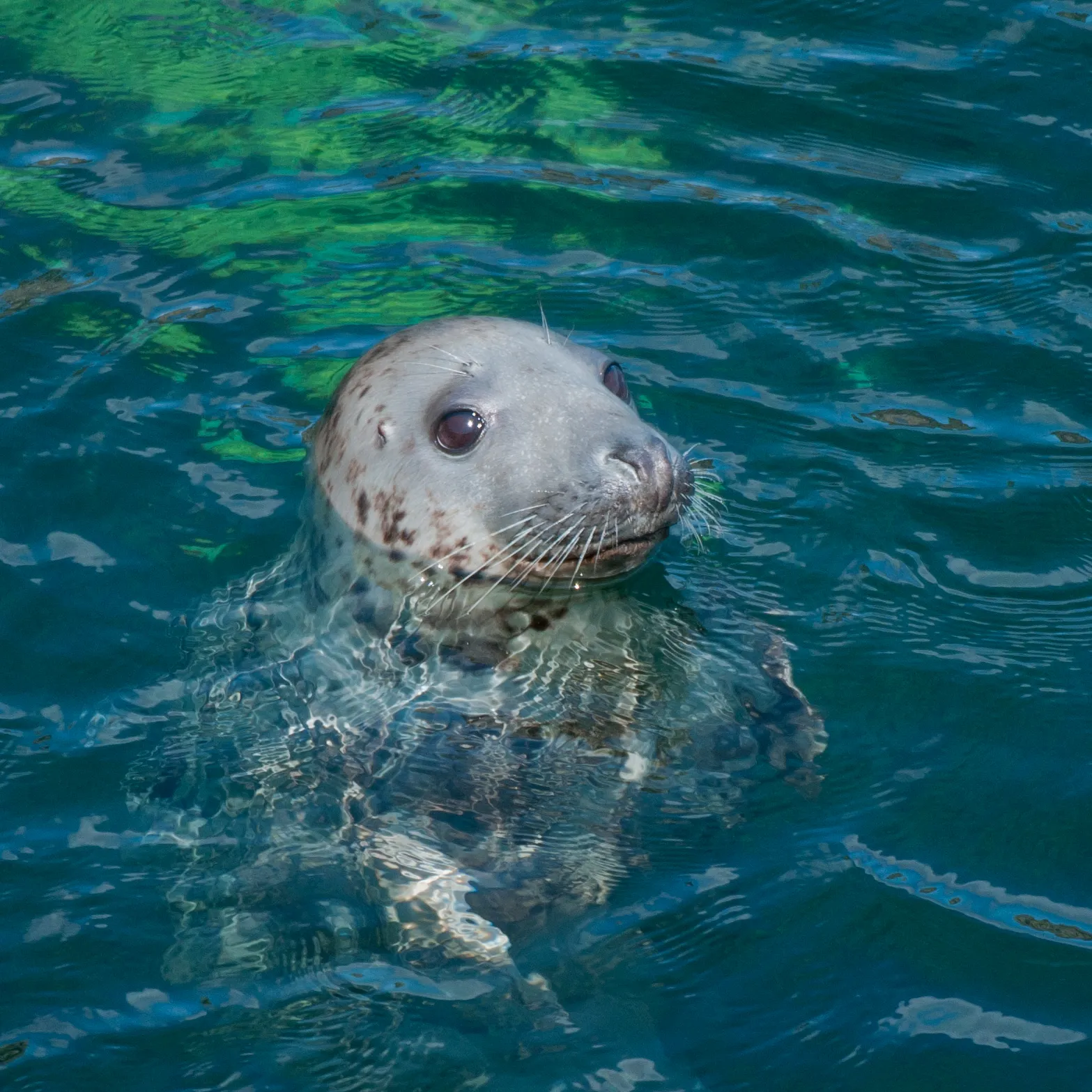
Cornwall is teeming with grey seals, but in winter you might come across seal pups stranded on the coastline in difficulty.
Visiting with a large group? Discover our large holiday homes perfect for big families or friend groups.
On your rambles along the South West Coast Path, it’s always a delight to spot the whiskered nose of a grey seal break the surface. You might even be lucky enough to have a close encounter with one of these majestic mammals when you’re swimming, paddleboarding, kayaking or surfing. Or spot one in the wake of a fishing boat chugging into a harbour with fresh catch.
Seals are one of the most frequently sighted marine mammals in Cornwall. However, as winter approaches, large numbers of seal pups are found stranded on Cornwall’s beaches or hauled out on rocks, due to malnourishment, injury, or being washed up in stormy conditions. And while it might be your natural instinct to herd them back into the sea in the hope of re-uniting them with their families, many of them need care and attention before being able to survive back in the wild Atlantic Ocean.
For over 60 years the Cornish Seal Sanctuary in Gweek has been a rescue facility for seal pups and injured seals. Much more than a visitor attraction where you’re guaranteed a close encounter with seals, here you can witness them dipping and diving their way to recovery, learn all about the species, and see lots of different marine wildlife including sea lions, otters, penguins, crabs and starfish. As well as seeing the seals in all stages of recovery, you can watch a practical demonstration about handling and rescuing seal pups – which is a starting point if you do come across one stranded on your beach wanderings.
The Cornish Seal Sanctuary rescues more than 75 pups in need every winter. Adopting decades of experience, a team of experts administer care, lifesaving medication and even vital surgery, to enable the seals to recover and be released back into the wild when they are ready to fend for themselves once again. The sanctuary also provides a permanent home to any seals with ongoing medical issues that prevent them surviving in the ocean.
A day out at the Seal Sanctuary is an eye opening, entertaining and educational day out for the whole family. Here you trace the steps of seals in recovery – from the most recently rescued pups undergoing care in the seal hospital, to those in their final stages of rehabilitation in the convalescence pool. You can also come nose-to-nose with seals, sea lions and penguins in the underwater viewing areas.
Discover our Porthleven holiday properties. Just 20 minutes away from the Cornish Seal Sanctuary.
While you can support the charity by visiting the sanctuary and donating to support the seal pups, you can also help by taking the right steps if you do come across a stranded seal pup on the beach. Firstly, do not approach the seal – and make sure you keep dogs and children away from it. Seals are wild animals and will defend themselves aggressively if they feel threatened, so keep your distance and observe the seal pup to assess whether it is in need. Seals regularly haul out on our coasts – it is part of their normal behaviour and therefore finding a seal on the beach does not mean there is necessarily a problem.
Discover five places to spot wildlife along the Cornish coast, where nature thrives amidst stunning landscapes and coastal beauty.
Abandonment or separation
If you see a seal with a white, long-haired coat in the autumn/winter, then it is probably still suckling from its mother. Check the sea regularly for any sign of an adult seal.
Malnourishment
Signs of malnutrition include visible ribs, hips and neck and baggy, wrinkled skin.
Bad health
Signs of ill health can include coughing and sneezing, noisy and rapid breathing, or thick mucus coming from the nose, wounds or swellings.
Injury or entanglement
Seals often get tangled in fishing gear and other debris. While heavy commercial gear is obvious, monofilament nets and line are hard to see when they are caught around the neck, flippers and body.
If you do find a seal pup in distress or need, these tips from the Seal Sanctuary and the British Divers Marine Life Rescue will ensure you do all you can to facilitate its safe and effective recovery:
Keep your distance
Take a good look to ascertain if the pup is alone, unwell, malnourished or injured.
Don’t touch the pup
It is a wild animal with sharp teeth. A mother may reject her pup if it smells of people, so keep downwind and (if possible) out of sight.
Don’t chase the seal back in the sea
A white-coated pup spends most time out of water. All seals haul out onto land to rest, digest and socialise all year round.
Do something about it
Phone the Cornish Seal Sanctuary for expert advice on 01326 221 361, or British Divers Marine Life Rescue on 01825 765 546, giving an accurate location.
More information
Seal Sactuary
Put Seal Pups First
The Cornish Seal Sanctuary is part of the SEALIFE Trust charity and couldn’t do their vital work without the support of the public.
Each seal pup costs, on average, £2000 to rehabilitate, not including special cases. Due to difficulties faced following the Covid-19 pandemic, the sanctuary has launched a Put Pups First campaign to supporting the seal pups through a difficult situation, provide advice and information to the public, and help the Cornish Seal Sanctuary continue their work.